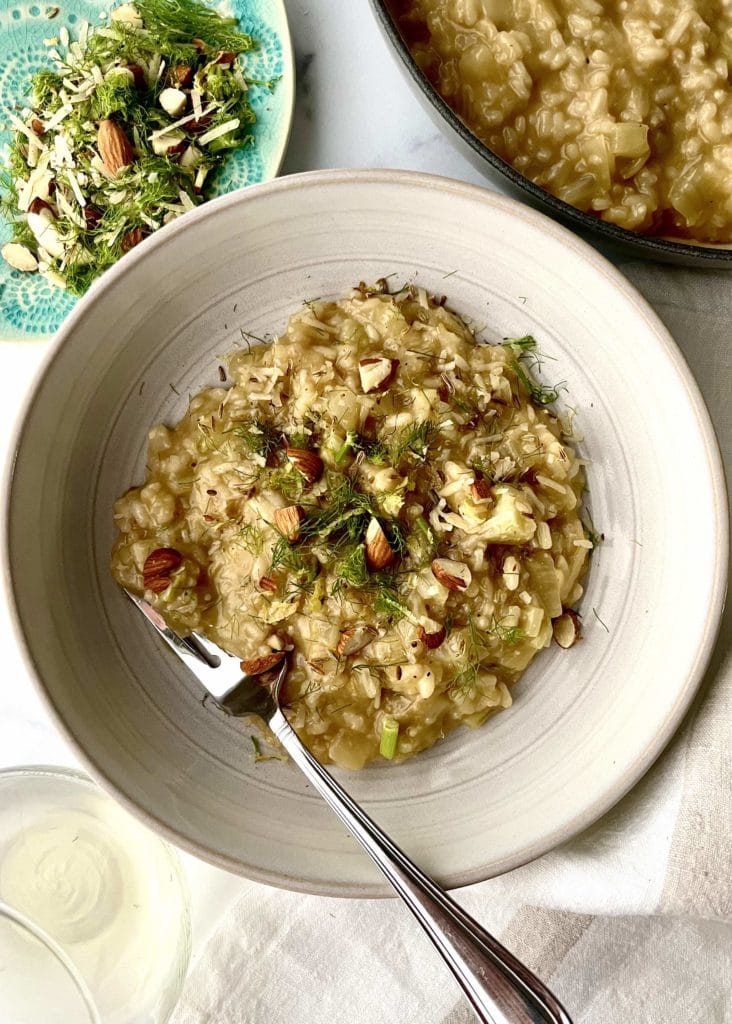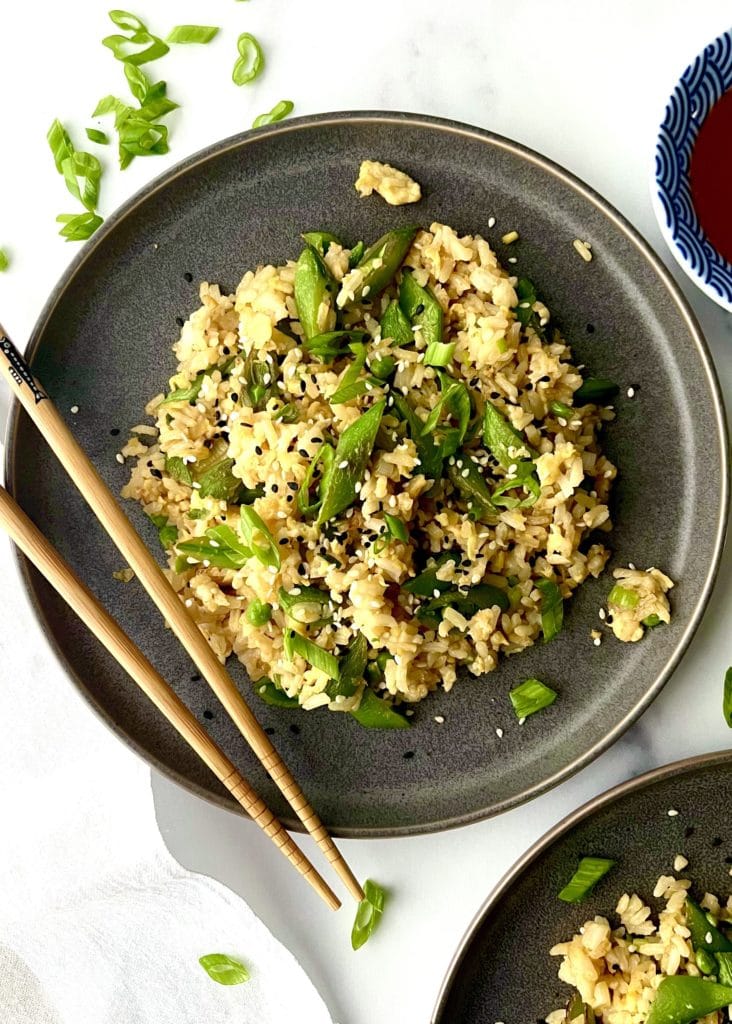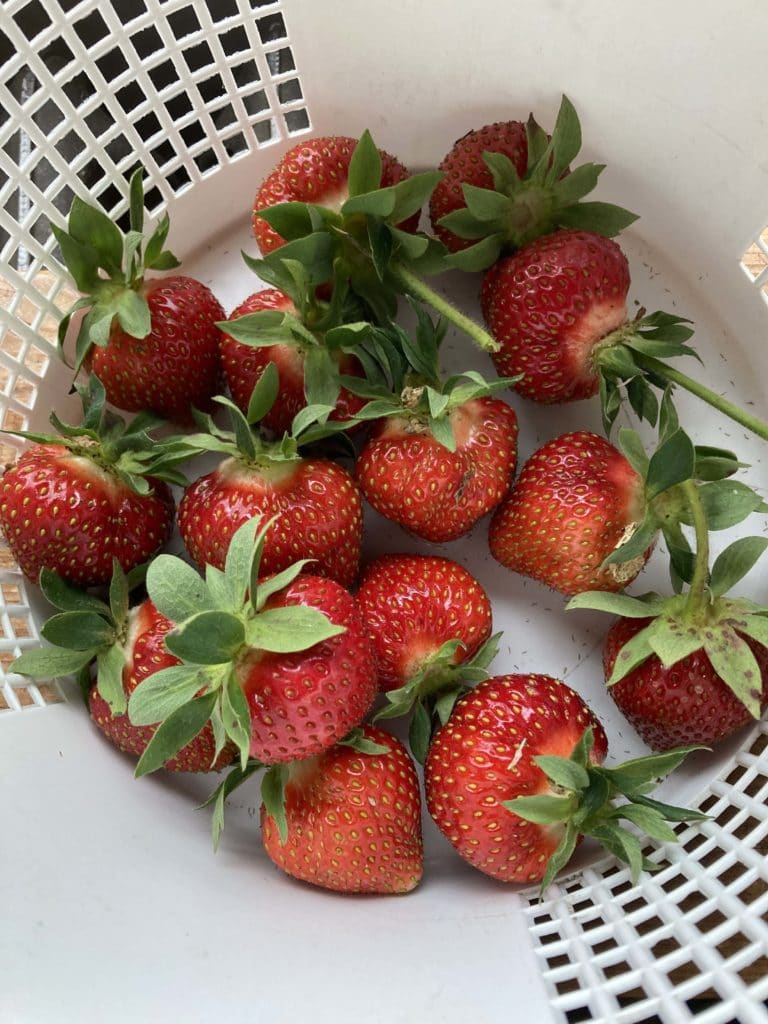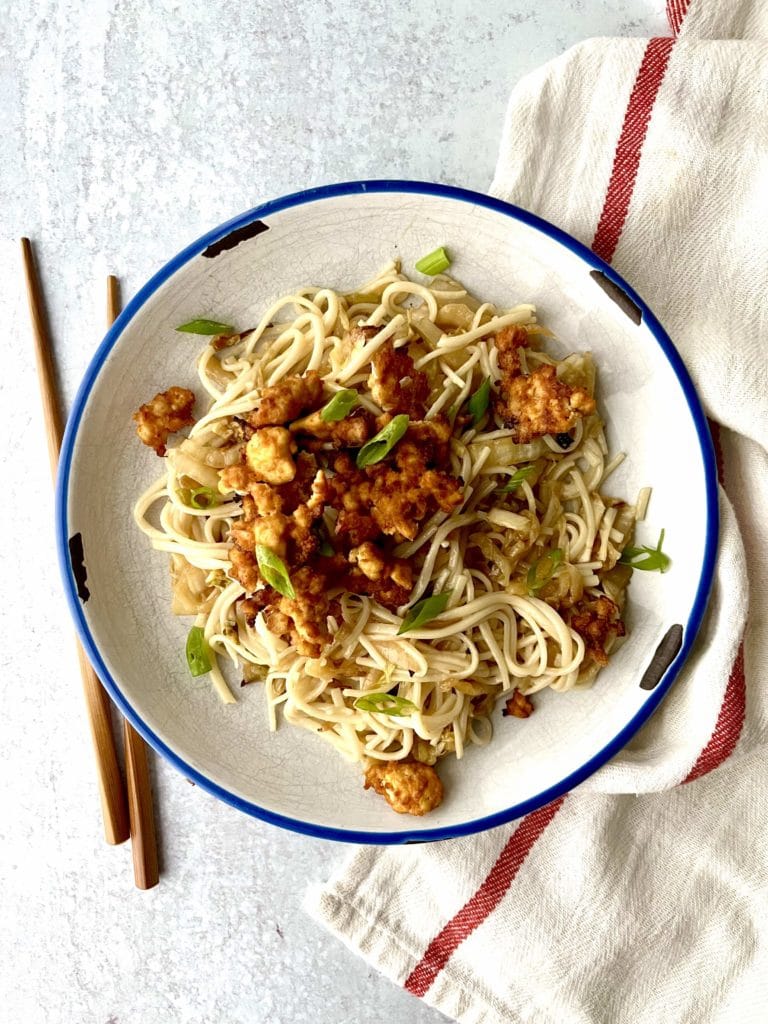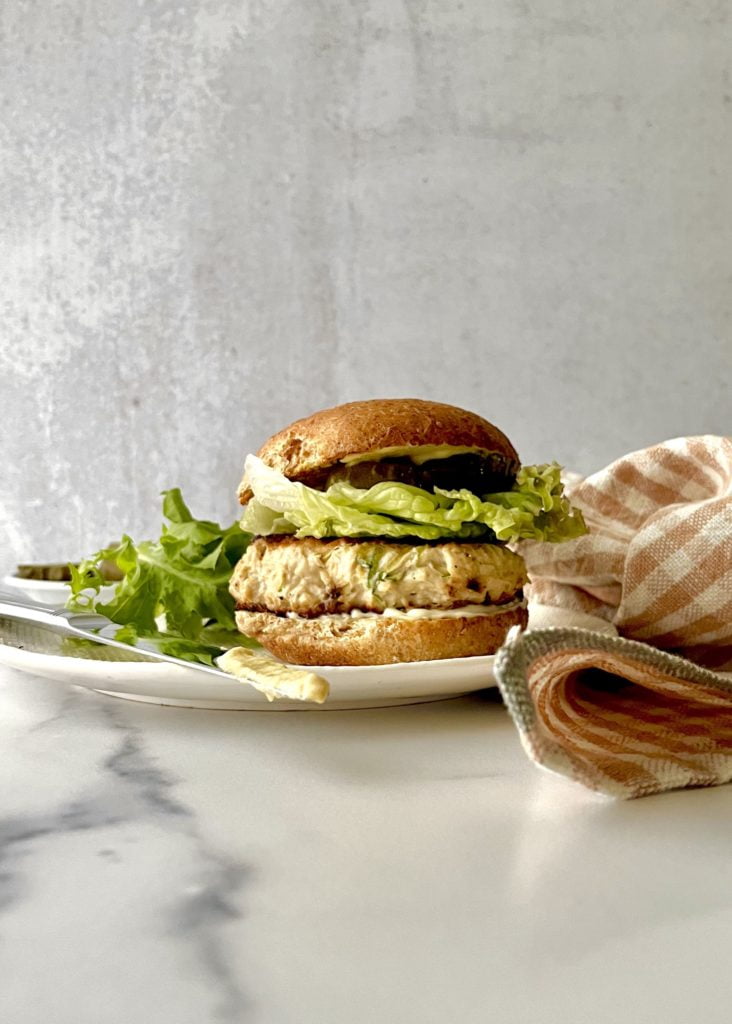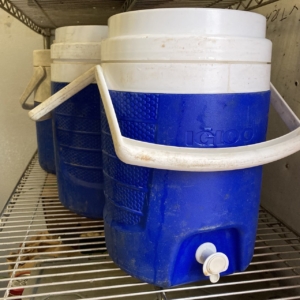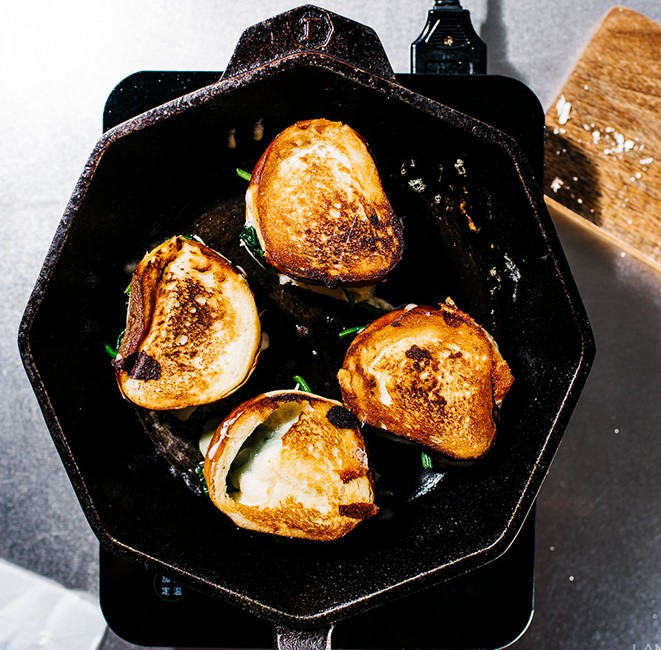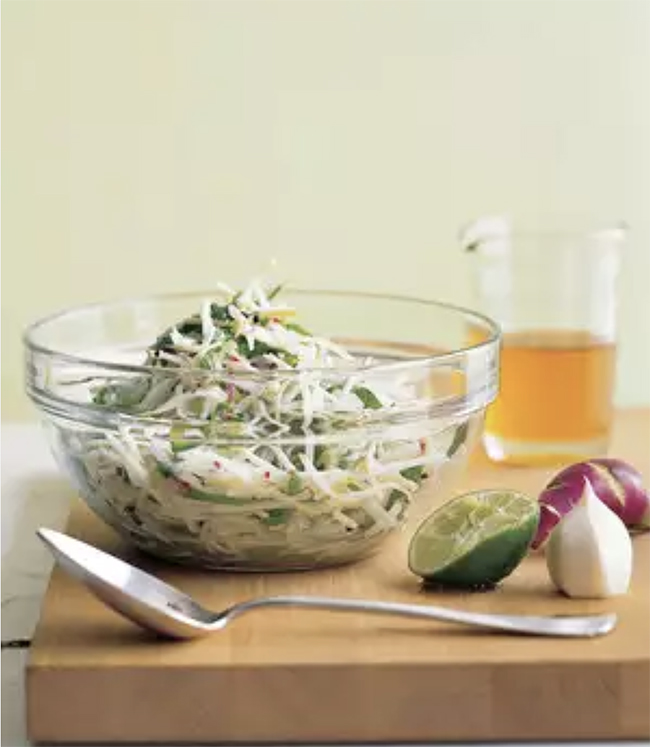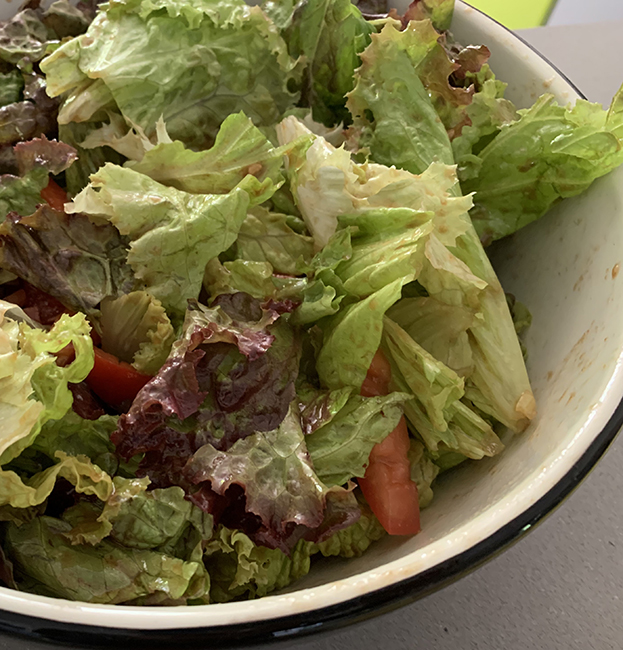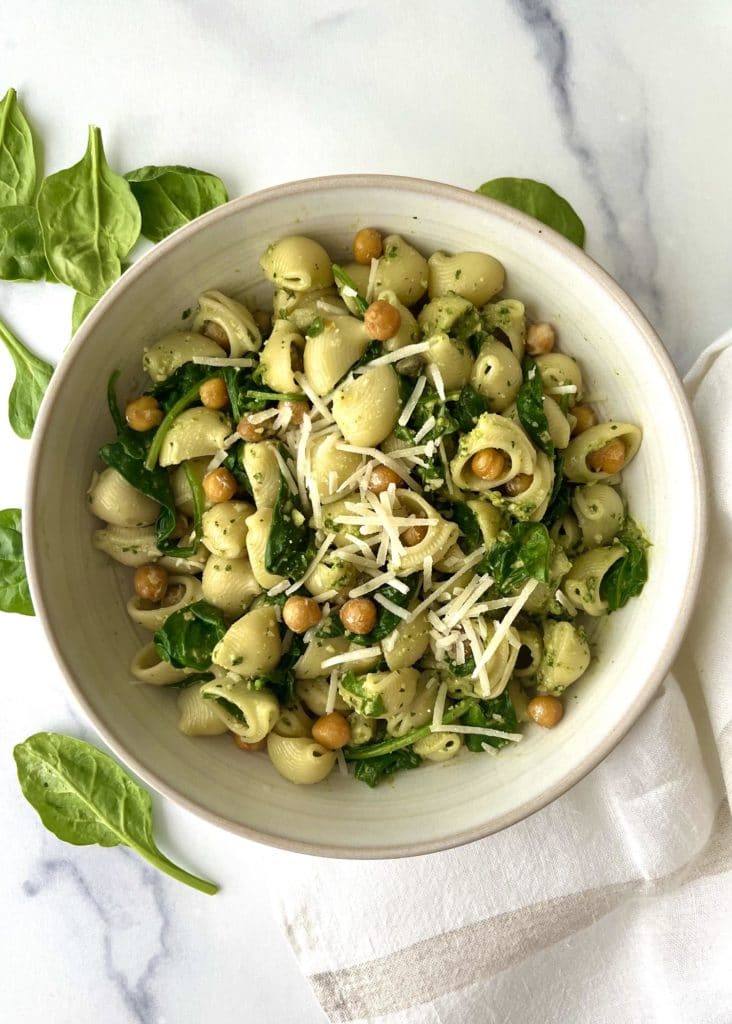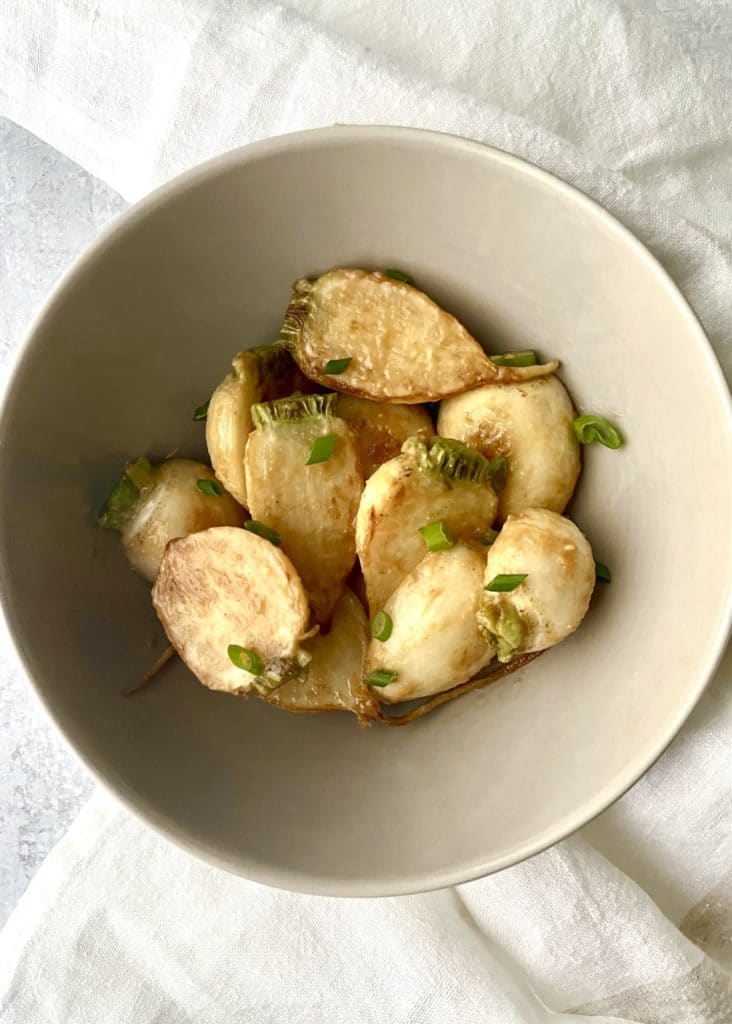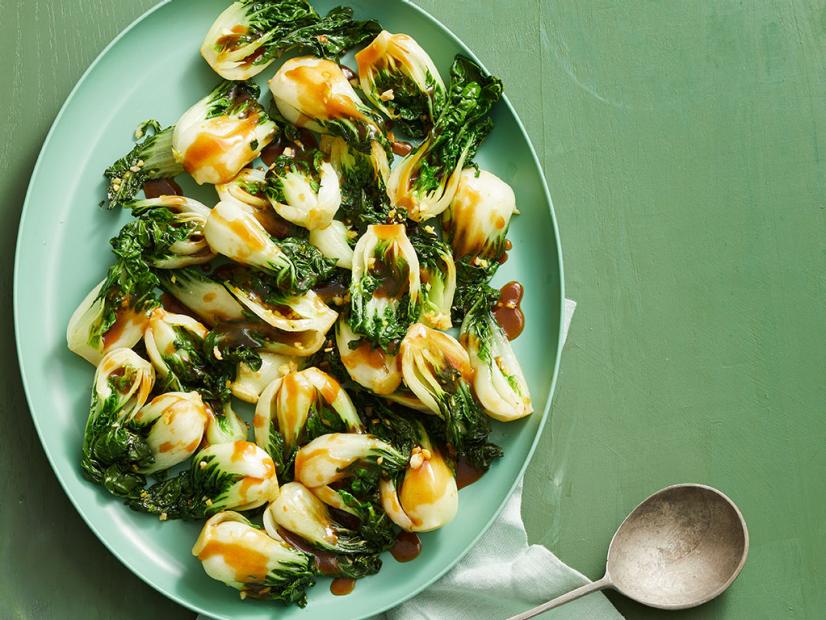Monthly Archives: June 2022
Week #6; Weird berry year
- On: June 29, 2022
 0
0
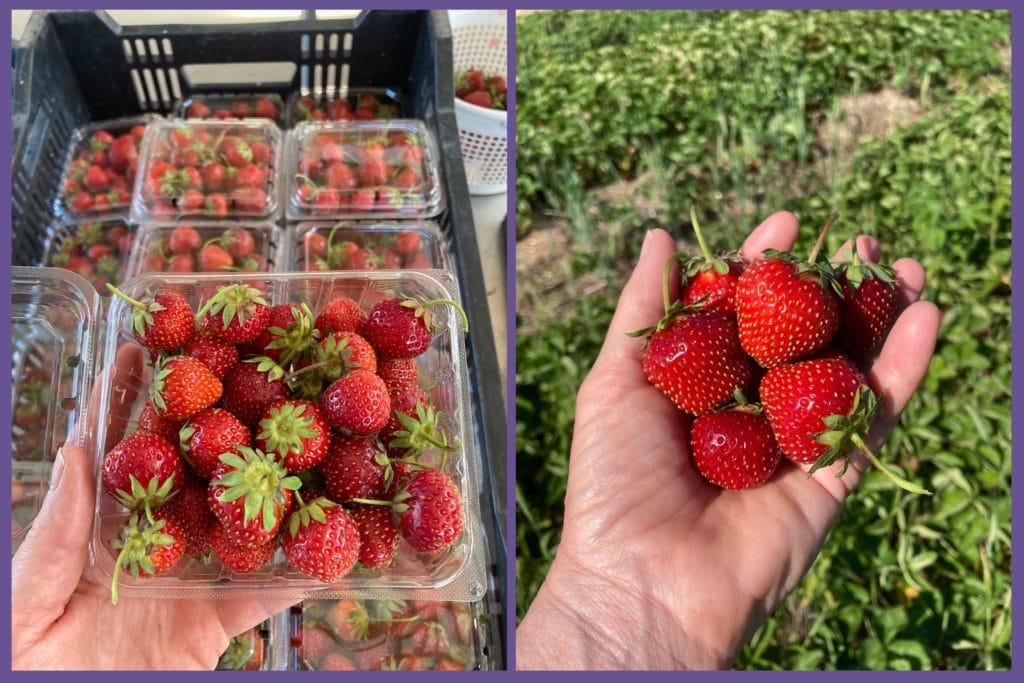
Small Jewel berries (left) and medium Jewel
This was an odd year for strawberries. Steve and I have spent hours analyzing this year’s field. Let’s review what we think happened.
We grew five varieties this year (to extend the season) but flowering was unusually concentrated across all the varieties following bursts of warm weather. That was an exciting moment because it predicted a massive u-pick. Sadly, hot, dry winds arrived at the flowering peak and damaged the blossoms. Earlier in May, I watched a different bout of hot, dry wind blast the flowers off my farmyard cherry and plum trees. Literally, every blossom was blown off the trees or left limp and damaged. There are zero cherries or plums on those trees. We think something similar happened in the strawberry patch. Even without wind, high temperatures damage strawberry pollen and flowers and there were many days in the 90s during the flowering season. Berries that do form during hot weather are smaller in size.
Basically, we got all of this year’s berries from three of the seven beds we planted. The remaining four beds were a bust, including one variety that succumbed to thrips, a pest that thrives in hot, dry weather. Home gardeners, we highly recommend the variety ‘Jewel’. It is a champ and produced almost all of this year’s berries.
The strawberries that formed this year are smaller than usual. Right now, we should be picking medium-sized berries, like you see in the right photo. We spent just as many hours harvesting, but have pints for you instead of quarts.
The fruiting peak coincided with our u-pick last weekend. That caught us by surprise, following weeks of sparse, small berries. The abundance was wonderful because we had berries for all who came to the farm and because you folks were here to pick the ripe fruit. Those berries would never have lasted long enough to harvest for the CSA boxes. The berries you receive this week all ripened since the weekend.
The best news is that the berries we have are intensely flavored, some of the best we’ve ever grown. The plants absorbed all that sunshine and turned it into small but amazing berries. We hope you enjoy and savor them.
Thank you for reading.
Beth
Veggie List & Veggie Notes
Week #6, June 30/ July 1, 2022
– Weekly shares
– EOW/ purple
– Sampler/ sun
Strawberries, 1 pint
Cucumbers, 2 or 3
Fennel, 2 to 3 bulbs with fronds
Lacinato kale, 1 medium bunch
Spinach, 1 medium bunch
Romaine lettuce
Zucchini & Zephyr summer squash, 3 to 3.5 lb
Snow peas, a small bag
Scallions, 1 bunch
Next week’s box will probably contain cabbage, zucchini, cucumbers, and more.
Strawberries – These are ripe so refrigerate and eat soon!
Cucumbers – Yeah, cucumber season begins! Our first cucumber field is a beauty this year. I’ll have to take some photos. We’re starting with a bang and everyone gets two this week.
Storage: Cucumbers store well at room temperature, especially if your house is cool. If you choose to refrigerate, choose a warmer part of your fridge. This is different than how most people handle their cucumbers but we’ve experimented with this and think room temperature is better.
Fennel (bulbs and lacy fronds) – Fennel is a ‘swing vegetable’; it can be used raw or cooked. Clean well and slice as thinly as possible for use in raw salads. It is good simply prepared with olive oil, lime or lemon juice, salt and shaved parmesan cheese. Cooking softens and sweetens fennel, and mellows its anise flavor. Both the bulb and leaves are edible. Here are ideas from Alice Water of Chez Panisse about how to use fennel: ‘It’s strong anise characteristic seems to suit fish particularly well. … We use fennel all the time. We add the feathery leaves to marinades for fish and to numerous salads, sauces and soups and we use them as a garnish, too. … The bulbs are sliced and served raw in salads in various combinations with other vegetables, parboiled for pastas; caramelized and served as a side dish; braised whole; or cooked in vegetable broths & fish stocks.”
Storage: Cover and refrigerate.
Lacinato kale (bundle of dark green leaves with pebbled texture. Also called ‘dinosaur kale) – Lacinato is such a nice variety of kale, quite tender with good flavor. Thin leaves means it’s a good choice for massaged salads. Lacinato is less productive than other varieties so it’s a treat to send it to you in the CSA boxes.
Spinach – This is the final bundle of spinach. Somehow this planting survived the hot weather! Honestly, it’s kind of a miracle. Yeah!
Snow peas. We have a handful for you this week, packed in a little paper bag. To remove strings, snap off the stem end and pull the string down the concave side of the pod (the inward-curing side). Throw away the string and eat the pod. The thicker pea pods will usually have a string along both edges. Remove them when you snap off the stem.
Storage: Refrigerate.
Uses: Use to top a raw salad or stir-fry.
Scallions – This is the final scallion delivery until fall. In a few weeks, we’ll have sweet Walla Walla onions for you. Uses: Our recipe writers love scallions as much as I do! There are loads of recipes that include scallions in newsletters from the last few weeks.
RECIPES by Phoebe
Fennel Lovers’ Risotto
In this recipe, diced fennel bulbs melt into a creamy risotto, while fennel fronds and crushed fennel seeds create a bright, crunchy topping. Needless to say, it has a robust fennel flavor, which I love against the tangy white wine and rich, savory Parmesan cheese.
Serves 4
Prep time: 10 minutes
Cook time: 40 minutes
Fennel Frond & Seed Topping
¼ cup raw almonds
1 teaspoon fennel seeds
3 tablespoons chopped fennel fronds
3 tablespoons freshly grated Parmesan cheese
2 teaspoons lemon zest
For the Risotto
2½ tablespoons extra-virgin olive oil
1 fennel bulb, diced
1 medium yellow onion, diced (or an additional fennel bulb)
½ teaspoon sea salt
Freshly ground black pepper
2 garlic cloves, minced
1 cup Arborio rice, rinsed
½ cup dry white wine
4 cups vegetable broth
⅓ cup freshly grated Parmesan cheese
- Make the topping: Place the almonds in a small dry skillet over medium-low heat and toast, stirring often, until fragrant and lightly browned, 2 to 4 minutes. Remove from the skillet and set aside.
- Add the fennel seeds to the skillet and toast until fragrant, about 30 seconds. Transfer to a mortar and pestle and roughly crush. Chop the almonds.
- In a small bowl, stir together the chopped almonds, crushed fennel seeds, fennel fronds, Parmesan, and lemon zest. Set aside for serving.
- Make the risotto: Heat 2 tablespoons of the olive oil in a medium Dutch oven over medium heat. Add the fennel bulb, onion, salt, and several grinds of pepper and cook, stirring occasionally, until the vegetables are soft and translucent, 8 to 10 minutes. Stir in the garlic, then add the rice and toast, stirring often, until translucent but not browned, about 2 minutes.
- Pour in the wine, stir, and let it cook down for 30 seconds. Add ¾ cup of the broth and simmer, stirring continuously, until the broth is mostly absorbed. Repeat with the remaining broth, adding ¾ cup at a time, stirring continuously, and allowing each addition to be absorbed by the rice before pouring in the next. The entire process will take about 20 to 30 minutes.
- When the final addition of broth is nearly absorbed by the rice, add the Parmesan and the remaining ½ tablespoon olive oil. Turn off the heat, stir vigorously, and allow the risotto to sit for 2 minutes. If it thickens too much, loosen it with a splash of broth before serving.
- Season to taste, top with the frond & seed topping, and serve.
Gingery Pea & Scallion Fried Rice
Snow peas add color and crunch to this unconventional riff on fried rice. If you can, cook the rice the day before so that it has a chance to dry out in the fridge. The day-old rice will give this recipe a lighter, fluffier texture, and it’ll become lightly crisp.
Serves 4
Prep time: 10 minutes
Cook time: 15 minutes
2 tablespoons plus 1 teaspoon neutral oil, such as canola or grapeseed
8 ounces snow peas or snap peas, strings removed, sliced on the bias into ¼-inch pieces
4 scallions, sliced, dark green tops reserved for garnish
2 garlic cloves, minced
1 tablespoon minced fresh ginger
3 cups cooked and cooled rice, preferably day-old
3 large eggs, beaten
2 tablespoons tamari or soy sauce
1 tablespoon rice vinegar
1 teaspoon sesame oil
Sesame seeds, for garnish
Sriracha, for serving
Sea salt
- Heat 1 tablespoon of the oil in a large nonstick skillet over medium-high heat. Add the snow peas and cook without stirring until the peas are charred on one side, about 3 minutes. Add the white and light green parts of the scallions and a pinch of salt, toss, and cook, stirring occasionally, until the vegetables are softened, 1 to 2 minutes. Stir in the garlic and ginger. Remove the veggies from the pan and set aside.
- Return the pan to medium-high heat and add another 1 tablespoon of the oil. Add the rice and press it into an even layer at the bottom of the pan. Cook without stirring until the rice is lightly crisp on the bottom, 5 to 8 minutes. Stir, then create a well in the center of the rice. Add the remaining 1 teaspoon oil, then pour the eggs into the well, sprinkle with salt, and scramble. Stir the scrambled eggs into the rice.
- Add the veggies back to the pan and stir to combine. Add the tamari and vinegar and cook, stirring, until the liquid cooks down and everything is heated through, 1 to 2 minutes. Turn off the heat and stir in the sesame oil.
- Season to taste and garnish with sesame seeds and the reserved scallion tops. Serve with sriracha.
Shaved Fennel & Crushed Olive Salad
From Smitten Kitchen
This simple shaved fennel salad would be a perfect light, refreshing side dish for so many meals. The crisp shaved fennel mingles with juicy smashed olives, sharp cheese, and a tangy orange-scented vinaigrette.
.
.

Photo by Jeanine Donofrio & Phoebe Moore
Zucchini Muffins
From Love & Lemons
Moist, warmly spiced, and studded with crunchy walnuts, these muffins are a yummy breakfast treat. If you like, replace the walnuts with an equal amount of chocolate chips, or sub summer squash for the zucchini.
.
.
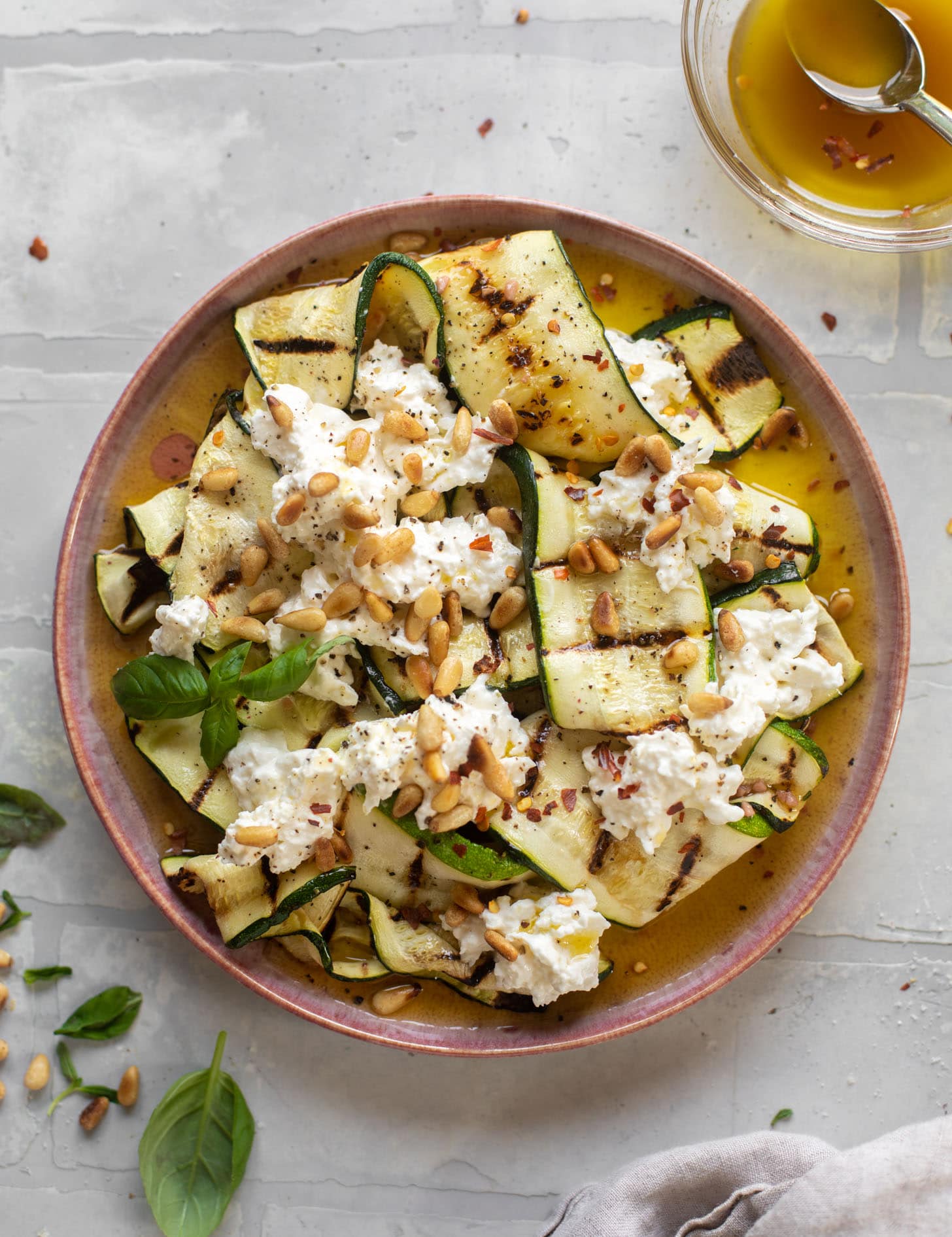
Photo by How Sweet Eats
Grilled Zucchini with Burrata & Pine Nuts
From How Sweet Eats
Creamy dollops of burrata play off tender grilled zucchini in this simple summer side dish. A 5-ingredient vinaigrette adds zing. The summer squash from this week’s box would work nicely in this recipe, too!
.
.
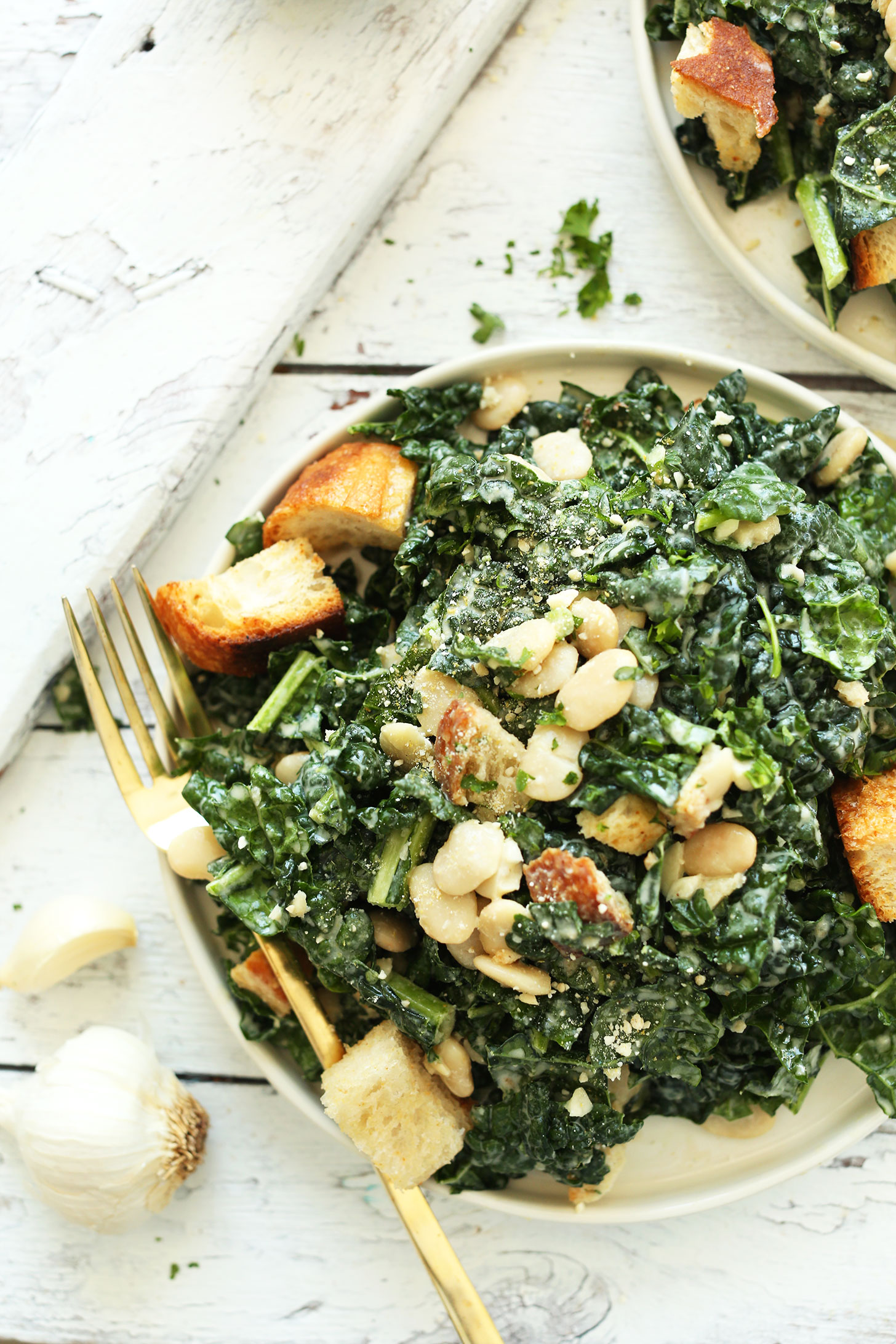
Photo by Minimalist Baker
White Bean Kale Salad
From Minimalist Baker
This punchy kale salad features lemony white beans, homemade garlic croutons, and a bright, creamy tahini dressing. Serve it as a side dish, or enjoy it on its own for a healthy lunch.
.
.
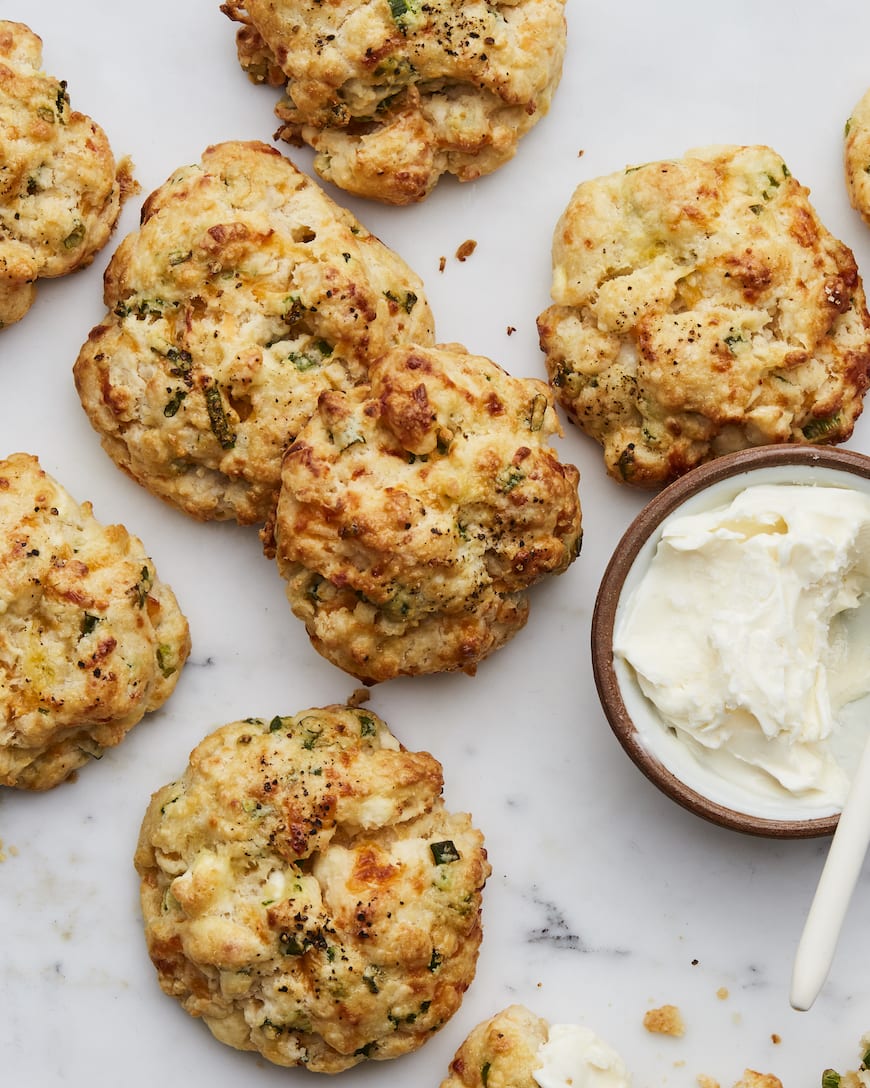
Photo by What’s Gaby Cooking
Savory Cheese & Scallion Scones
From What’s Gaby Cooking
These savory scones would be such a fun way to use the scallions in this week’s box! They feature 3 kinds of cheese – cream cheese, feta, and sharp cheddar.
.
.
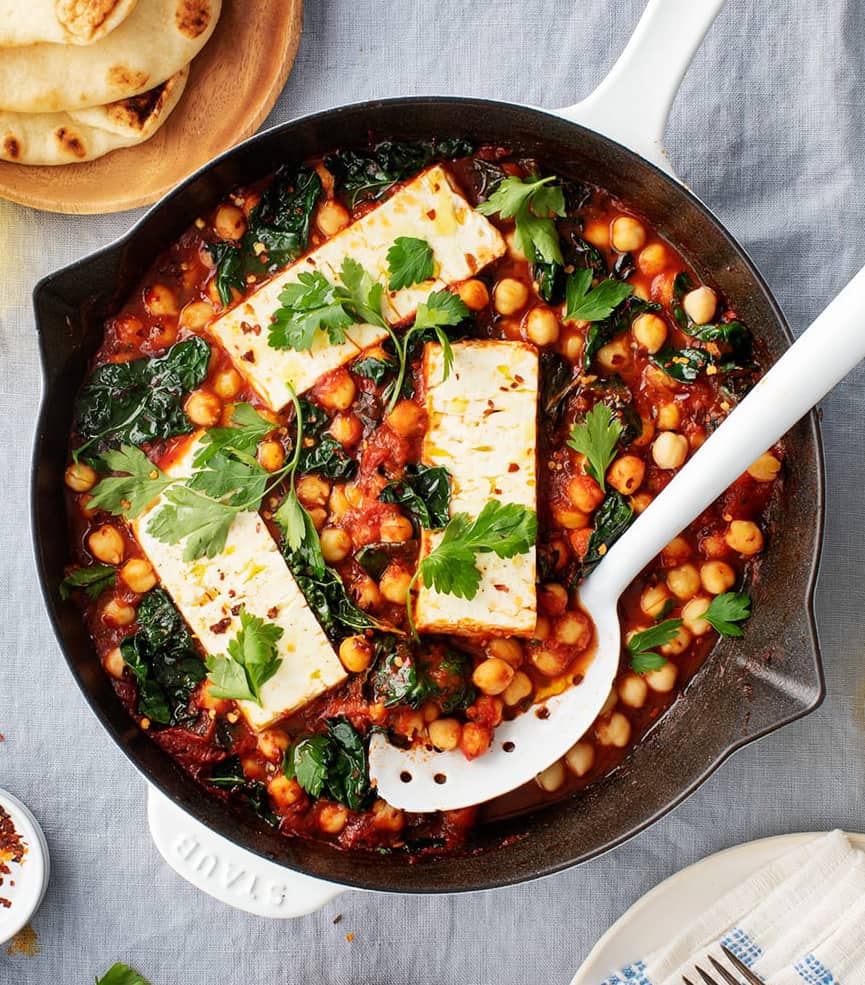
Photo by Jeanine Donofrio & Jack Mathews
Baked Feta
From Love & Lemons
I love this recipe because it’s really simple, but also really flavorful. A cumin-spiced tomato sauce coats chickpeas and lacinato kale, and creamy slabs of baked feta nestle on top. Serve it with good bread for sopping up the sauce.
Week #5
- On: June 22, 2022
 0
0
The hot weather has been hard on the strawberries. They are smaller than usual but intensely flavored. We should have one pint for everyone this week. Savor and enjoy them! Check your email later this week for messages from the farm about berry picking.
Our daughter Sophie broke her ankle so I spent most of the last week in St Paul, helping her before and after surgery. She fell while climbing in an indoor ‘bouldering’ gym. The surgery went well but she has a long recovery ahead. Anyway, if you sent me an email this week but didn’t hear back from me, please just send it again. I kept up with email but something might have slipped through the cracks.
Beth
Veggie List & Veggie Notes
Week #5, June 23/24, 2022
– Weekly shares
– EOW/ green
Strawberries, 1 pint
Snap peas, 0.7 lb
Napa cabbage
Swiss chard, 1 medium bunch
Zucchini & yellow squash, ~3.5 lb
Iceberg lettuce
Kohlrabi
Scallions, 1 bunch
Next week’s box will probably contain snap & snow peas, zucchini, spinach, greens, lettuce and more.
Strawberries – Storage: Refrigerate and eat soon! They are delicious!
– Most berries are quite clean. If you want to clean your berries, rinse gently. Don’t soak them, just rinse.
– Please recycle your strawberry containers. We no longer collect them for re-use. Please do not return them to your pick-up site.
Snap peas – These pea pods have strings to remove. Snap off the stem end and pull the string down the concave side of the pod (the inward-curing side). Throw away the string and eat the pod. The thicker pea pods will usually have a string along both edges. Remove them when you snap off the stem. Snap peas should be eaten pod and all. They are delicious raw, or very lightly cooked or stir-fried.
Heads up!: You may find some fibrous shell-type pods mixed in, from off-type plants. This happens with some varieties.
Preparation: They will need a quick rinse to remove faded gray blossoms.
Storage: Refrigerate.
Napa cabbage (large, pale green cabbage with crinkled leaves) – Napa cabbage is an interesting vegetable, useful for both fresh, raw salads and for cooking. Its most famous use is fermented kimchi. I like to prepare a fresh, unfermented kimchi. Same seasonings, but it’s ready to eat right away. You will be amazed at how much shredded napa cabbage shrinks when prepared this way. See here for an example, but cut the salt in half (or even further): Grilled Flank Steak with Kimchi-style Coleslaw.
Storage: Napa stores very well. When refrigerated, it will keep for several weeks. Peel off the outer layer and it will be ready to use. Here are a few preparation ideas from the ‘Asparagus to Zucchini’ cookbook.
– Chop raw napa into green salads.
– Substitute napa in traditional coleslaw.
– Chinese cabbage cooks quickly. Steam 3-5 minutes, or until leaves are wilted down but remain slightly crisp.
– Substitute napa cabbage for common cabbage in recipes, but reduce the cooking time by 2 minutes.
– Napa cabbage is the main ingredient in egg rolls. Try making an egg roll mixture to eat as a cooked side dish instead of preparing time-consuming egg rolls.
RECIPES by PHOEBE
Garlic Noodles with Spicy Tofu Crumbles & Roasted Napa Cabbage
Heads up: this recipe calls for quite a bit of cabbage. It might seem like too much to fit on one large baking sheet, but it really wilts down as it cooks, becoming tender and caramelized so that it practically melts into the garlic noodles. The other fun thing about this recipe is the sriracha tofu crumbles. They’re crispy and spicy, and, if you ask me, easier to work with than cubed tofu, which has a tendency to fall apart anyway. We like to eat them straight off the baking sheet!
Serves 4
Prep time: 15 minutes
Cook time: 30 minutes
10 cups shredded Napa cabbage (about 1 pound)
3 scallions, thinly sliced, green tops reserved
Tamari
Avocado oil
14 ounces extra-firm tofu, patted dry and roughly crumbled
2 tablespoons sriracha
8 ounces dry wheat noodles
1½ tablespoons rice vinegar
2 garlic cloves, grated
- Preheat the oven to 425°F and line two large baking sheets with parchment paper.
- Place the cabbage and the white parts of the scallions on one of the baking sheets and drizzle with 1½ tablespoons tamari and 1 tablespoon avocado oil. Toss to coat and spread evenly on the baking sheet. Place the tofu on the second baking sheet and drizzle with 1½ tablespoons tamari, 2 teaspoons avocado oil, and the sriracha. Toss to coat and spread evenly on the baking sheet. Place both baking sheets in the oven and roast until the tofu is browned and crisp around the edges and the cabbage is soft and browned, 30 to 40 minutes, tossing the cabbage twice throughout the cooking process.
- Meanwhile, bring a large pot of water to a boil and prepare the noodles according to the package instructions. Drain and rinse under cold water, running your fingers through the noodles to prevent clumping.
- In a large bowl, whisk together 3 tablespoons avocado oil, 1 tablespoon tamari, the rice vinegar, and garlic. Add the noodles and toss to coat. Add the roasted cabbage and toss again.
- Portion the noodles into bowls and top with the sriracha tofu. Garnish with the reserved scallion tops and serve.
Zucchini Turkey Burgers
Grated zucchini (or yellow squash) adds moisture to these easy homemade turkey burgers. Serve them on buns with your favorite fixings. Iceberg lettuce from this week’s box would be great!
Serves 4
Prep time: 20 minutes
Cook time: 10 minutes
1 teaspoon extra-virgin olive oil, plus more for cooking the burgers
1 cup grated zucchini
1 pound lean ground turkey
2 tablespoons finely chopped scallions
1 tablespoon Dijon mustard
1 tablespoon mayonnaise
1 garlic clove, grated
¼ teaspoon cayenne pepper
1 teaspoon sea salt
Freshly ground black pepper
4 hamburger buns, for serving
Desired fixings, for serving
- Heat the olive oil in a large nonstick or cast-iron skillet over medium heat. Add the zucchini and cook, stirring occasionally, until softened, about 3 minutes.
- Transfer the zucchini to a large bowl and add the turkey, scallions, mustard, mayo, garlic, cayenne, salt, and several grinds of pepper. Use a fork or spatula to mix until well combined. Form the mixture into 4 patties and chill for at least 10 minutes and up to an hour to make the patties easier to handle.
- Heat the same skillet over medium-high heat and coat the bottom with oil. Add the patties and cook until browned on both sides and cooked through, 4 to 5 minutes per side. (When checked with a meat thermometer, the internal temperature should reach 165°F.) Reduce the heat as needed if the burgers brown too quickly.
- Serve on the hamburger buns with your desired fixings.
Zucchini Butter Spaghetti
From Smitten Kitchen
In this 8-ingredient recipe, grated, sautéed zucchini transforms into an irresistible sauce for pasta. The recipe calls for a handful of basil leaves, but you could easily skip them or replace them with any leafy herb that you happen to have on hand.
.
.
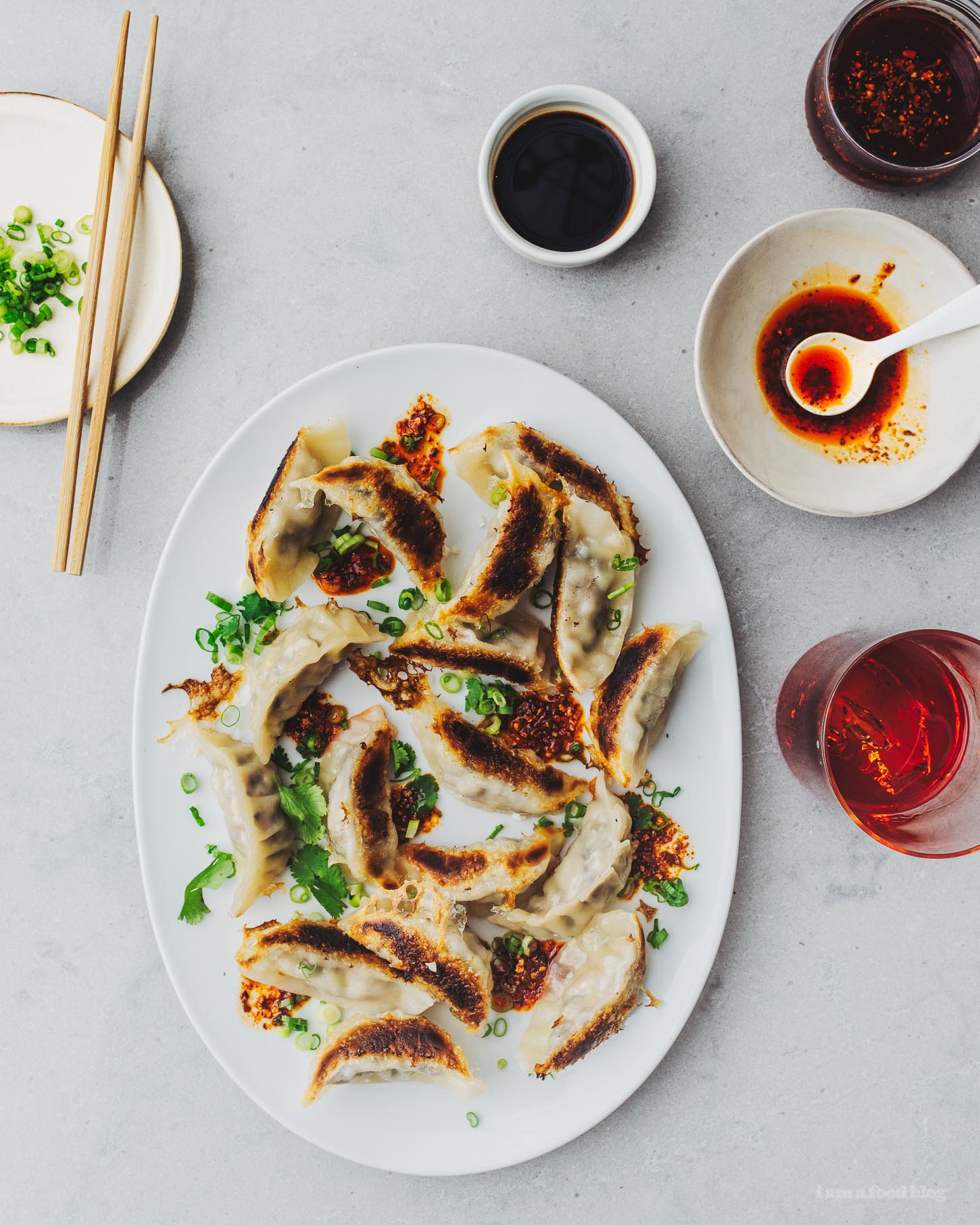
Photo by I am a food blog
Homemade Pork and Garlic Chinese Potstickers
From I am a food blog
If you’re looking for a fun cooking project to try this summer, make your own dumplings at home! This recipe has a flavorful pork, scallion, and napa cabbage filling and uses store-bought dumpling wrappers to streamline the cooking process.
.
.
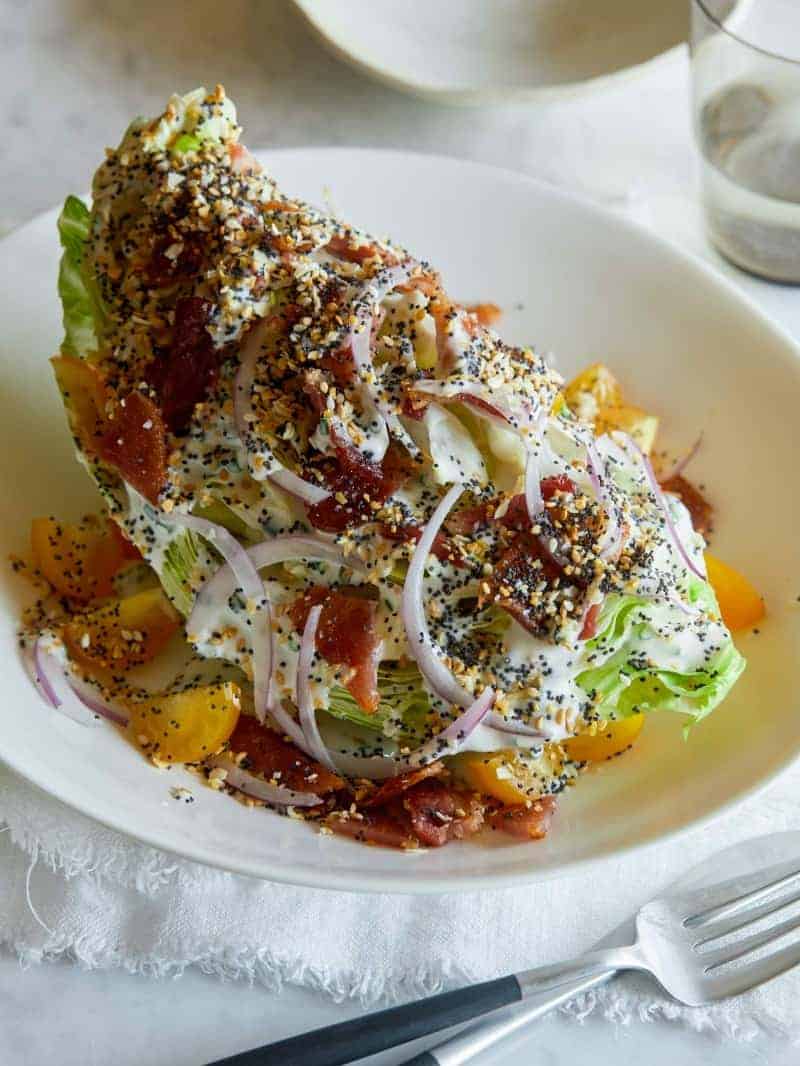
Photo by Spoon Fork Bacon
Everything Bagel Seasoning Wedge Salad
From Spoon Fork Bacon
This fun riff on a classic wedge salad would be a great way to use the iceberg lettuce that’s in the box this week. Substitute minced scallions for the chives and dill in the dressing, and skip the red onion and cherry tomatoes on top. Thanks to the creamy, tangy ranch dressing, crispy bacon, and everything bagel seasoning, the salad will be plenty flavorful without them.
.
.
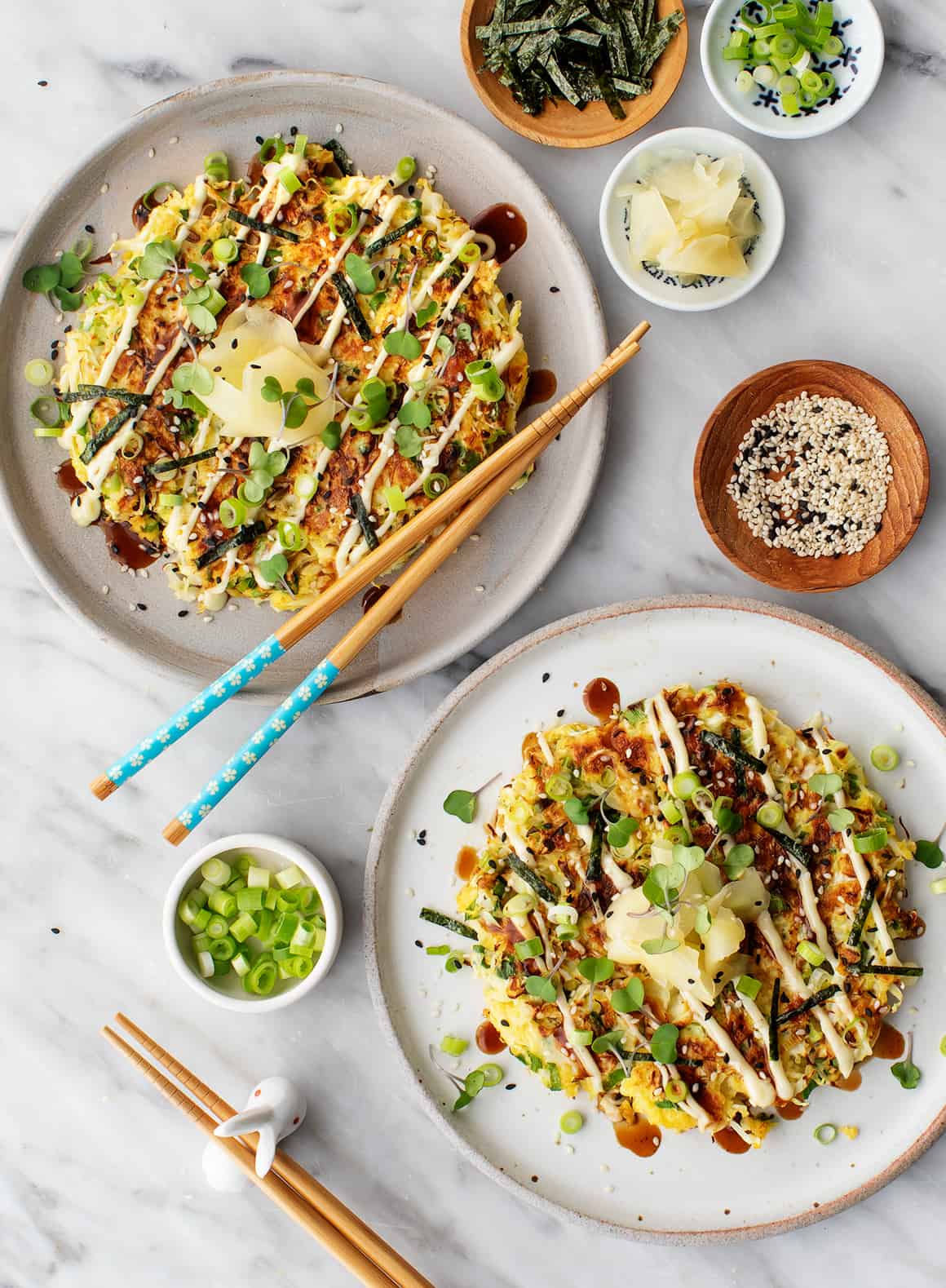
Photo by Love & Lemons
Okonomiyaki
From Love & Lemons
Okonomiyaki are savory Japanese pancakes made with cabbage, scallions, and often assorted seafood or meats. This recipe isn’t traditional in that it’s vegetarian, but it is really delicious and surprisingly simple to make. Don’t hesitate to pile on the toppings – they’re a huge part of what makes this recipe so flavorful and fun to eat!
.
.

Photo by Andrea Bemis
Kohlrabi Chicken Salad
From Dishing Up The Dirt
Kohlrabi adds crunch to this veggie-forward twist on classic chicken salad. Feel free to skip the dill, or substitute any soft, leafy herb that you happen to have on hand.
.
.
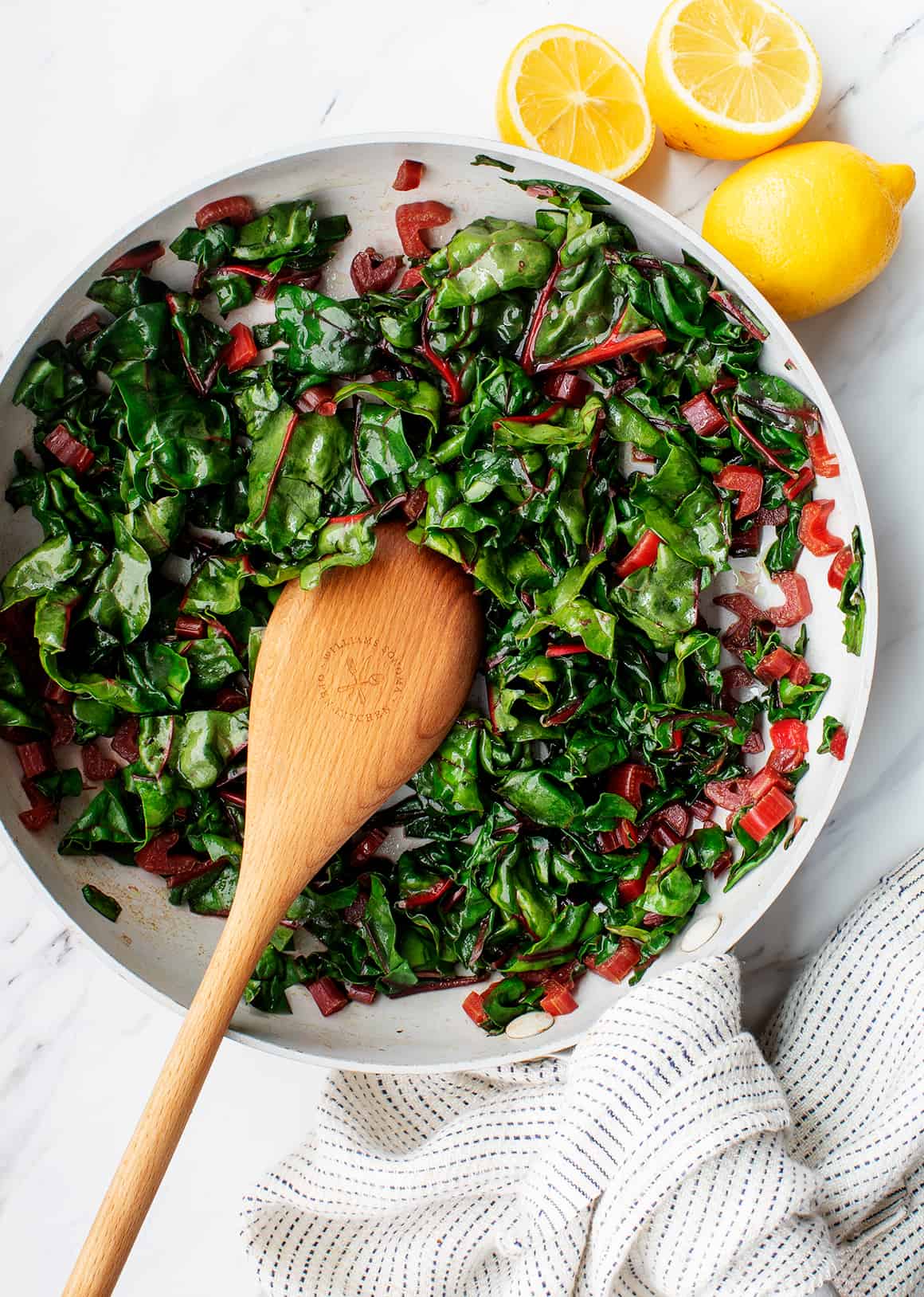
Photo by Love & Lemons
Simple Sautéed Swiss Chard
From Love & Lemons
Serve these lemony sautéed greens (and stems) as a side dish, or use them as a starting point for a larger meal. Toss them with pasta, Parmesan, and toasted pine nuts for a quick dinner, or add them to a frittata with scallions from this week’s box.
Week #4, Farm tips for keeping cool
- On: June 15, 2022
 0
0
Hot days are brutal. Our trusty crew has suggestions for you.
“Hydrate or die-date”. I do not love this phrase but it’s compelling. Our final task each day is to wash and refill our water jugs and put them in the cooler overnight. Then we are ready with chilled water the next day.
Soak your hat. Better yet, soak then freeze it! The effect does not last long but it certainly wakes you up.
Appreciate the wind! A hot day is bearable with a steady wind.
Wear a lightweight long-sleeved shirt to keep the sun off your skin. It seems counterintuitive and that it would make you hotter but it does not, especially if there’s a breeze. Trust me, you will feel better at the end of the day.
Soak your head under a faucet! It’s the quickest way to cool down.
With temps in the 90’s we need to watch for heat exhaustion. Our crew watch out for each other, especially the newer employees, making sure everyone rotates jobs between the field and the pack shed. Our walk-in coolers offer a quick respite and the inside of our barn stays cool, a good place to sit down if needed. We offer gatorade by the gallon.
We hope you are all doing well in the heat and taking care of yourselves.
Beth
Veggie List & Veggie Notes
Week #4, June 16/17, 2922
– Weekly shares
– EOW/ purple
– Sampler/ moon
Strawberries, 1 paper cup
Komatsuna, 1 big bunch
Spinach, 1 medium bunch
Red leaf lettuce
Zucchini or yellow squash, 1 or 2 ct
White salad turnips, ~1/2 lb
Kohlrabi, 1
Leek, 1 small
Scallions, 1 bunch
Next week’s box will probably contain spring greens, snap peas, zucchini, lettuce, kohlrabi, scallions, strawberries and more.
Strawberries in a paper cup – Enjoy this tiny amount of berries. They are very ripe because of insane heat Tuesday and Wednesday so they are not going to last. Don’t be fooled if they look over-ripe – they are delicious. I suggest that you eat them on your way home from your CSA site but you were probably going to do that anyway!
Komatsuna (large bundle of dark green leaves) – We’ve moved on to the next variety in this planting and we still love this new type of Asian green. Please ignore the flea beetle damage again this week – that’s just how that field turned out. Can be used as a substitute for other Asian greens or mustard greens.
Zucchini or yellow squash – We should have one or two squash for each of you. This is the first harvest, the beginning of a long squash season. Some of these first fruits are lumpy, the result of incomplete pollination. This happens every year. The bees have found the zucchini field and pollination has already improved.
New varieties: We trying some new zucchini varieties, some of which are quite dark in color, so don’t be surprised if your squash looks a little different this year.
Storage: Zucchini and summer squash need refrigeration but do not do well at very cold temperatures, as they soften and form pits in their surface. Refrigerate these squash but in the warmest part of your fridge. Wash the squash just before you use it.
Kohlrabi (pale green, round vegetable with thick skin) – Crunchy and sweet, kohlrabi is a great addition to salads.
Storage: Kohlrabi bulbs will store for a month in the refrigerator. Remove the leaves if you plan to store for more than a few days.
Uses: Kohlrabi are good peeled and eaten out of hand, or added to sandwiches, or added to salads. It makes a nice salad on it’s own. You can grate it, slice it, or cut it into matchsticks. It’s also good cooked.
Leek – We have one leek for each of you. Last fall, we ended the harvest season with every cooler full and we were pretty worn out. We left one bed of leeks in the ground and gambled that they would survive the winder. Some did, then regrew this spring into the leek you receive this week.
Storage: Cover and refrigerate. Use soon.
RECIPES by DEB
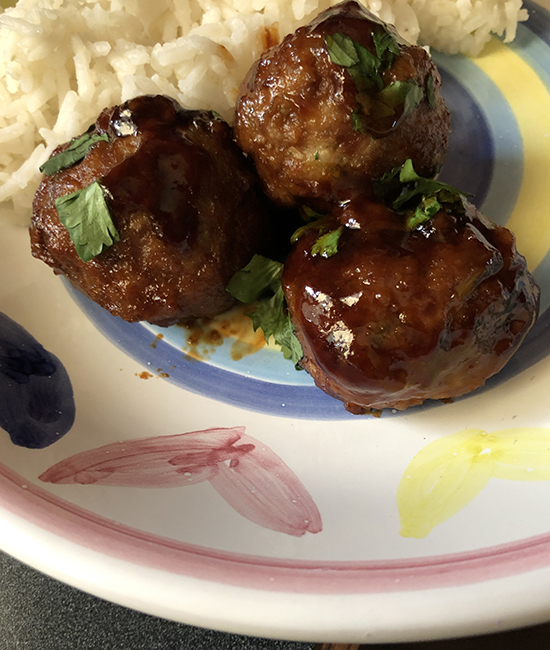
Scallion Meatballs
This dish is based on a recipe from The Canal House, that’s made with ground turkey, while I have used ground pork. You may use either! You can also make small meatballs, and serve them as an appetizer, or larger ones – as shown – and serve them with rice for dinner.
Serves: 4 generously
Takes: 40 minutes
Sauce
1/2 cup dark brown sugar
1/2 cup water
1/2 cup soy sauce, reduced sodium if your prefer
1/2 cup vermouth (sweet or dry), or white wine of any variety
1/4 cup roughly chopped fresh ginger
1 teaspoon ground coriander
4 whole black peppercorns
1/2 cup ketchup
a good squirt of Siracha
Meatballs
1 pound ground pork or turkey
5-6 scallions, one small bunch, finely chopped (can be done in the food processor)
1 egg, lightly beaten
1 cup breadcrumbs
2 tablespoons sesame oil
2 tablespoons soy sauce
Freshly ground black pepper to taste
optional: fresh cilantro for garnish
- Make the sauce: Combine the sugar and water in a wide skillet and heat over medium heat until the sugar dissolves. Add the soy sauce, vermouth, ginger, coriander, and peppercorns, and simmer until the sauce is slightly reduced and looks a bit syrup-y. Cool slightly and strain into a glass measuring pitcher with a spout. Add the ketchup and Siracha and set aside while you make the meatballs. Wipe out the skillet.
- Make the meatballs: Heat the oven to 375°. In a large bowl or a stand mixer, combine the pork, scallions, egg, breadcrumbs, sesame oil, and soy sauce and mix throughly. Hands are good for this. Season with pepper.
- Shape the meatballs: Here’s where you get a choice – you can make golf-ball size dinner meatballs, using 3 tablespoons, yielding about 18 meatballs; OR appetizer size, using 1 tablespoon, yielding about 24. Either way, as you shape them, arrange the meatballs on a parchment-lined or lightly oiled baking sheet. Transfer to the oven and bake for about 20 minutes until lightly browned.
- Finishing: Transfer the meatballs back into the wiped out skillet. Pour in the sauce, heat over low heat, and roll the meatballs around in the sauce till they’re nicely glazed. Garnish with cilantro if using, and serve – with rice for dinner or toothpicks for appetizers.
.
.

Stir Fry with Toasted Noodles
Serves: 3-4
Takes: 30 minutes
This recipe uses Komatsuna, leek, and zucchini from this week’s box, but you could use just about any combination of veggies – clean out the crisper drawer! You can also use other types of noodles instead of ramen. Here’s a picture of a batch I made with Udon, because one of our kids ate the last pack of ramen noodles.
Ingredients:
One 3-oz. package of ramen noodles, or about 3 oz of any other kind of thin noodle; spaghetti, Udon, angel hair
2 tablespoons of sesame oil or vegetable oil, divided
1 leek, white and light green parts, split lengthwise, rinsed, and chopped
About 1 pound of greens such as Komatsuna or bok choy, rinsed, leaves separated from stems, and chopped
1 medium zucchini or summer squash, chopped
1/4 cup hoisin sauce, purchased or homemade
- Add one tablespoon of the oil to a large skillet or wok, and heat over medium-high heat until fragrant. Crush the ramen noodles by bashing the package with a rolling pin. If using another noodle type break them into 2-3 inch lengths. Add the noodles to the hot oil and toast, stirring often. When toasted transfer the noodles to a bowl.
- Pour the remaining tablespoon of oil into the skillet, place it over medium-high heat and add the leek. Toss, turn the heat down, and cover for a few minutes to soften. Add the zucchini and Komatsuna stems, and continue to cook for about 5 more minutes, until softened. Make a space in the middle of the pan and add the hoisin sauce. Stir to melt the sauce, and add the leaves and toasted noodles. Cover and steam for a few minutes to wilt the greens. Uncover, stir, and if it seems too wet, cook a few more minutes to boil off the extra moisture.
.
.
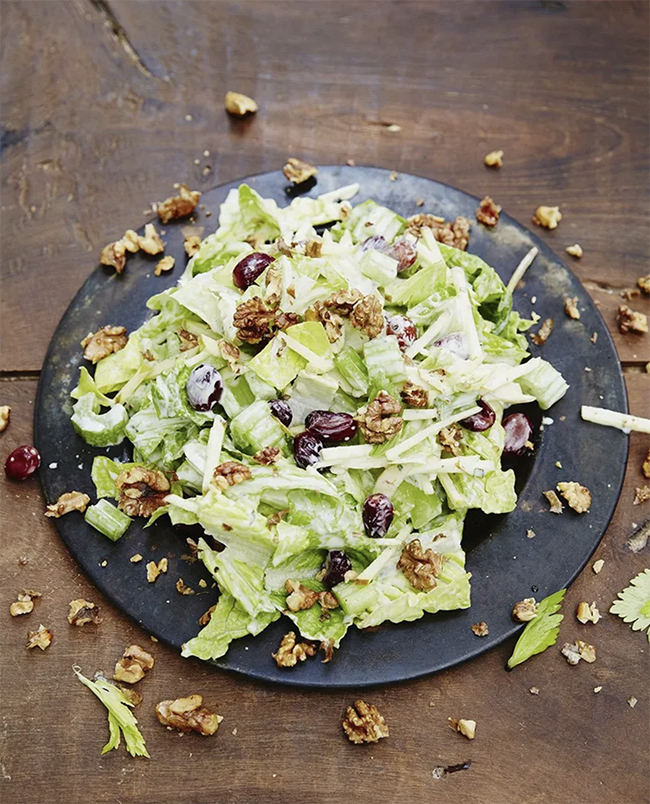
Photo from jamiroliver.com
Waldorf salad | Jamie Oliver
From Jamie Oliver
This recipe does include a bunch of things we do not have in the box, especially celery and fresh tarragon. The secret trick is caramelizing the grapes and walnuts. Try it with the red leaf lettuce and salad turnips subbed in for the apple – add a few pinches of dried tarragon to the lemony yogurt dressing and it will bring it together deliciously!
Spinach Mozzarella Grilled Cheese on Pretzel Bread
From i am a food blog
Here’s a fun way to eat up this week’s spinach – pretzel bread and buns are readily available at the grocery store.
Kohlrabi-and-Turnip Slaw Recipe
From marthastewart.com – Salad Recipes
This refreshing slaw recipe calls for about a pound of kohlrabi and 8 oz. of turnips – we have the right total amount of veggies from the box, but the reverse proportions. Feel free to use the larger amount of turnips, especially since the salad turnips are so mild, and less kohlrabi.
Leek Mac and Cheese Recipe
Grace Parisi, from Food & Wine
In this recipe, the tough green part of the leek is softened by slow cooking and added to Mac & cheese. You can add quicker cooking spinach or Komatsuna greens as well.
Simple Red Leaf Salad
From AllRecipes
Here’s a nice salad idea for our red leaf lettuce.
Week #3; Komatsuna is a winner.
- On: June 08, 2022
 0
0
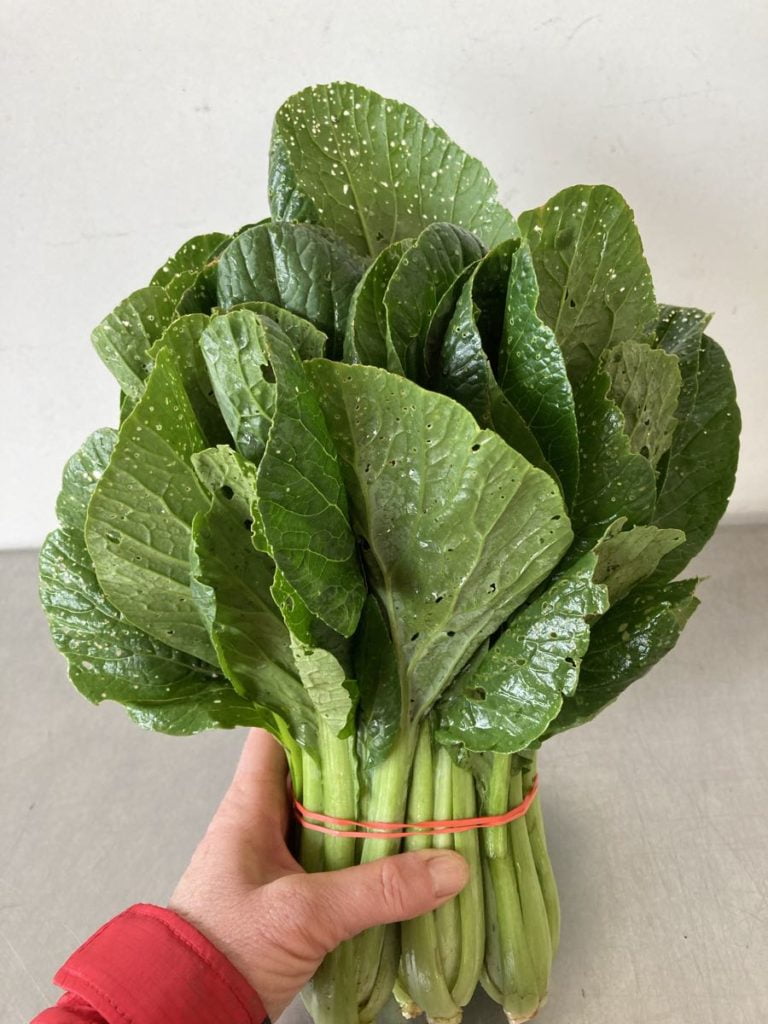
Komatsuna greens: delicious, resilient, beloved by flea beetles.
For years, we’ve searched for new tender greens to grow for our spring CSA boxes. There is a gap in harvests that is not easily filled by bok choy or mustard greens or arugula because they are prone to bolting (premature flowering) after fluctuating weather. We tried a new green this year called komatsuna. It’s tender and delicious, retaining beautiful leaf texture and color even after alternating hot and cold weather and far too much wind.
I would call this a mild mustard green. Please ignore the flea beetle damage this week – that particular field was badly hit this year.
We recommend cooking this week’s harvest rather than using in salads. Next year, we’ll try a younger harvest for raw use. “Komatsuna is traditionally used in Japan either steamed and seasoned with soy sauce, or in stir fries and soups. It is also excellent braised.” (from Johnnys Seeds)
Here’s a particularly enthusiastic seed catalogue description:
“One of the “most underrated” leafy greens, Komatsuna is simply mouth watering. This leafy green is incredibly delicious, mild and tender. It holds superfood status in its native Japan, and in some studies it contained nearly twice as much calcium as whole milk per 100 grams! The leaves are also super high in beta carotene, as well as vitamins A, C and K. Komatsuna has been revered in Japanese, Taiwanese and Korean cuisine as a mouth-watering veggie for many years, and in America chefs and nutritionally minded foodies have identified it as a delicious, juicy and health-promoting green. Let the culinary experimentation begin!”
Use in any recipe that calls for mustard greens or bok choy. Phoebe has a few suggestions in our Recipes section below, or just google ‘komatsuna recipes’ for some traditional Japanese dishes.

The crew harvested your komatsuna in and after rain today. It was a muddy job and everyone was relieved when the rain stopped. The bottom crates are empty spacers that we use to keep our harvest crates off the mud. From left, Ella, Chelsea, Ari, Matt, Raul and Karen. Offscreen, Maggie, Madelyn and Owin.
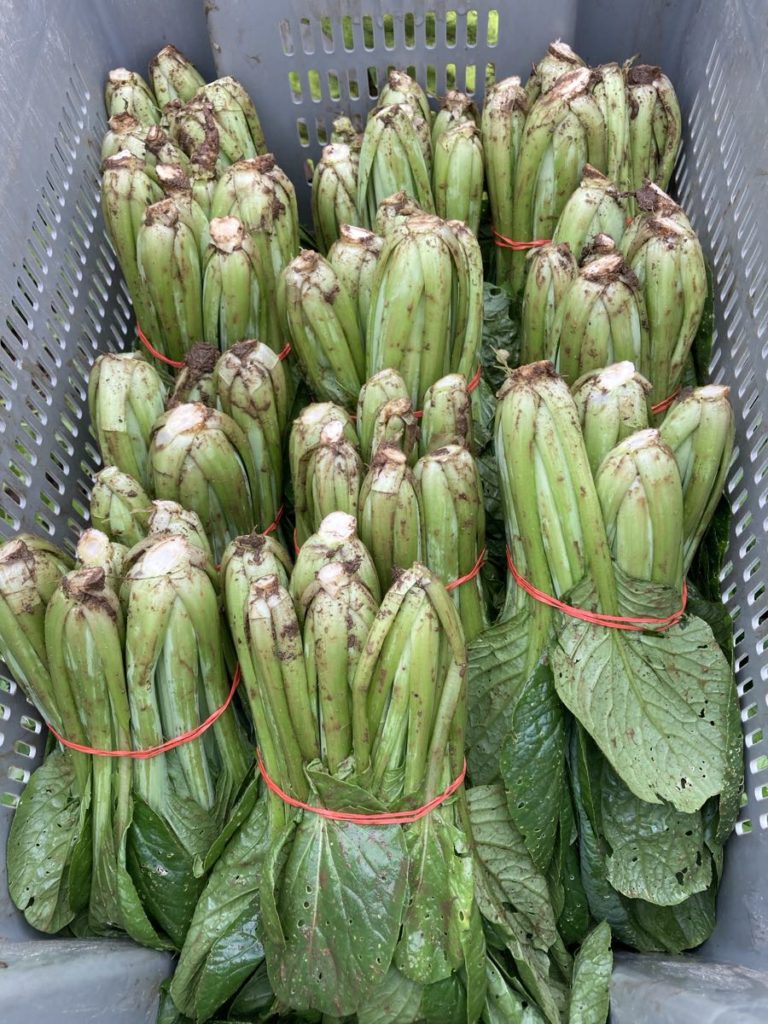
Komatsuna bunches before washing. Plan to wash your greens carefully this week. Rain splashed soil and grit into your komatsuna, spinach, escarole and Romaine.
Veggie List & Veggie Notes
Week #3, June 9/10, 2022
– Weekly shares
– EOW/ green
Shiitake mushrooms, 1/2 lb
Escarole, 1 head
Romaine lettuce, 1 head
Spinach, 1 bunch
Komatsuna greens, 1 bunch
White salad turnips, 1/2 to 2/3 lb
Cilantro, 1 bunch
Scallions, 1 bunch
Salad radishes OR kohlrabi, small amount
Next week’s box will probably contain white salad turnips, spinach, lettuce, spring greens, scallions and more.
Escarole (broad head of wavy green leaves) – These members of the chicory family can be used interchangeably in recipes. Both are good eaten raw or cooked. Their slightly bitter flavor is a good addition to mixed salads. They are excellent cooked alone or mixed with other greens. They cook quickly, but not as quickly as spinach. Cover and refrigerate.
Shiitake mushrooms – These are from Hidden Valley Mushrooms, the same people who grow button mushrooms for us. I love shiitakes cooked with spinach or other greens. Shiitakes must be cooked. A small subset of people can have a toxic reaction to raw or undercooked shiitakes. Once cooked, they are harmless. And tasty! Lightly sauté in butter and add to any dish. We use ours in frittatas, as well as sautéed and mixed into pasta salad or any dish. Sautéed shiitakes and spinach are a great topping for pizza or rice bowls, e.g. bibimbap.
Storage, general: Refrigerate in a dry paper bag, but not in your crisper drawer with other vegetables, especially brassicas. Do not cover the paper bag. Mushrooms are perishable so use soon.
White salad turnips ( 1 to 3 white roots) – I know that returning members look forward to these sweet and delicious turnips, which taste nothing like the turnips that are harvested in fall. We removed the tops this year and are sending just the roots.
– Storage: Cover and refrigerate.
– Uses: Salad turnip roots are excellent raw; Slice and add to salads. They can be cooked and are especially good when lightly sauteed in butter. Stir as little as possible so they brown on at least one side.
– Our favorite use: Slice the roots very thinly and combine with a mixture of rice vinegar, mirin, soy sauce, sesame oil. Eat immediately or marinate.
Romaine lettuce (upright head of lettuce with crisp leaves) – More sturdy and less fragile than our other spring lettuces. Great for Caesar Salad or lettuce wraps. If you’re intimidated by the amount of salad greens this week, Ceasar salad is a good option because it shrinks a big head of lettuce and everyone will fight over the leftovers. Poof, it’s gone.
Komatsuna greens (bundle of dark green leaves) – See above. Storage: Cover and refrigerate.
Scallions (bundle of green onions) – These are useful raw or cooked. Thinly-sliced raw scallions can be folded into biscuit dough or sprinkled on top of soups or salads. Terrific garnish for pasta dishes. Think pad thai.
(ONE site will receive instead of radishes) Kohlrabi (pale green, round vegetable with thick skin) – Crunchy and sweet, kohlrabi is a great addition to salads.
Storage: Kohlrabi bulbs will store for a month in the refrigerator. Remove the leaves if you plan to store for more than a few days.
Uses: Kohlrabi are good peeled and eaten out of hand, or added to sandwiches, or added to salads. It makes a nice salad on it’s own. You can grate it, slice it, or cut it into matchsticks. It’s also good cooked.
Greens ID
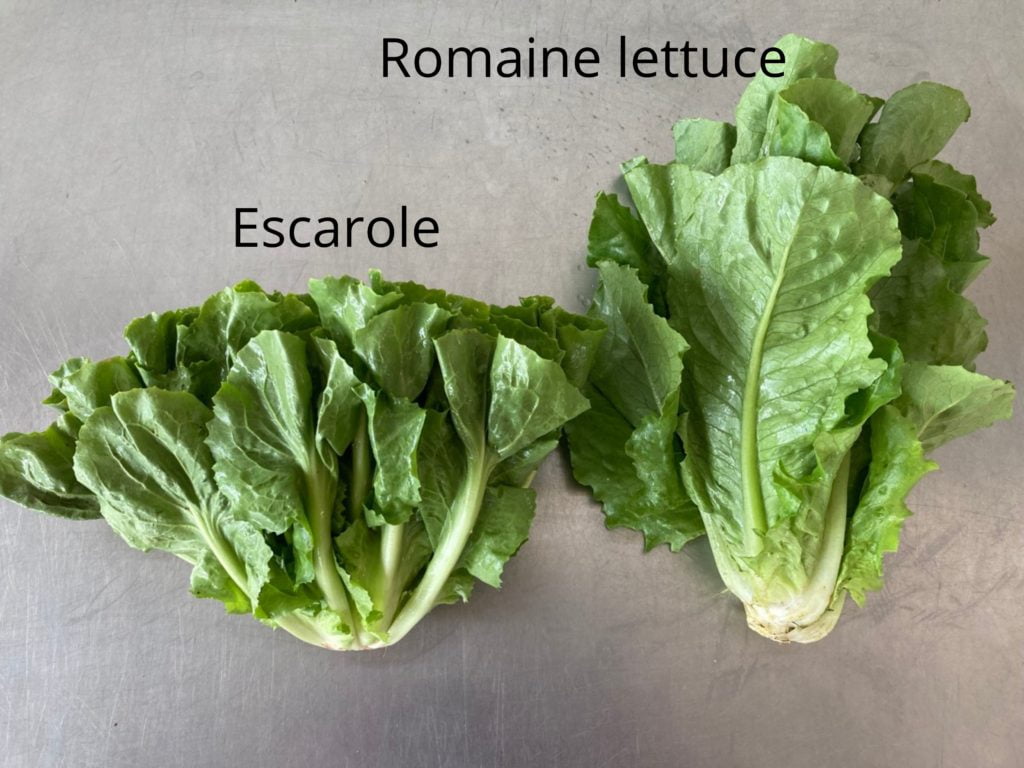
This week’s escarole and Romaine lettuce look pretty similar. Examine the base to distinguish them. Escarole mid-veins are whiter and more pronounced. Also, escarole leaves are wavier.
RECIPES by PHOEBE
Spinach Pesto Pasta with Capers and Chickpeas
In this bright & briny pasta recipe, I use spinach two ways. I blend some into a vibrant pesto with lemon and capers, and I toss the rest with the pasta to add texture to the final dish. You could make this recipe with almost any pasta shape, but I think it’s most fun when you use pipe rigate or orecchiette – something that will catch and cradle the capers and chickpeas.
Serves 4
Prep time: 15 minutes
Cook time: 20 minutes
For the pesto
½ cup toasted walnuts*
2 tablespoons fresh lemon juice
1 garlic clove
2 teaspoons capers
¼ teaspoon sea salt
2 cups spinach
¼ cup extra-virgin olive oil
½ cup freshly grated Parmesan cheese
Freshly ground black pepper
For the pasta
10 ounces pipe rigate or other short pasta
2 tablespoons extra-virgin olive oil
1½ cups cooked chickpeas, drained, rinsed, and patted dry, loose skins removed
1 tablespoon capers
4 cups spinach
Freshly grated Parmesan cheese, for serving
- Make the pesto: In a food processor, place the walnuts, lemon juice, garlic, capers, salt, and a few grinds of pepper and pulse until finely chopped. Add the spinach and pulse to combine. With the food processor running, drizzle in the olive oil and pulse to form a thick sauce. Add the Parmesan and pulse until combined.
- Make the pasta: Bring a large pot of salted water to a boil. Cook the pasta according to the package instructions, cooking until al dente. Before draining the pasta, reserve 1 cup of the starchy pasta water. Drain the pasta and set aside.
- Meanwhile, crisp the chickpeas. Heat the olive oil in a large skillet over medium heat. Add the chickpeas and cook, stirring occasionally, for 6 to 8 minutes, or until the chickpeas are lightly crisp and beginning to brown. Stir in the capers and remove from the heat.
- Return the pasta pot to the stove. Heat it over low heat, then add the spinach and 2 tablespoons of the reserved pasta water and stir until the spinach is just wilted. Add the pasta back to the pot and toss to combine. Stir in the chickpeas and capers. Add the pesto and ½ cup of the reserved pasta water and toss to coat, adding more pasta water as needed to loosen the sauce. Season to taste and serve with freshly grated Parmesan cheese.
*I like to toast the walnuts in a 325°F oven until fragrant, 5 to 10 minutes.
Sautéed Turnips with Miso Butter
White turnips are one of my favorite spring vegetables, and this easy side dish is a really simple, delicious way to enjoy them. I love how the rich, savory miso butter accents the natural sweetness of the sautéed roots.
Serves 2 to 4 as a side dish
Prep time: 5 minutes
Cook time: 8 minutes
1 1/2 tablespoons unsalted butter, at room temperature
2 1/4 teaspoons white miso paste
2 teaspoons extra-virgin olive oil
8 ounces white turnips, halved if small, quartered or cut into thin wedges if large
2 tablespoons water
Thinly sliced scallion greens or finely chopped cilantro, for garnish (optional)
Place the butter and miso paste in a small bowl. Use a fork to cream them together.
Heat the olive oil in a large lidded skillet over medium heat. Add the turnips, cut side down, and cook without stirring until they start to brown underneath, 4 to 5 minutes. Flip them over, add the water, and quickly cover the pan. Reduce the heat to medium-low and cook until the turnips are tender when pierced with a knife, about 3 minutes.
Uncover the pan and turn off the heat. Add the miso butter and allow it to melt, tossing the turnips to coat. Serve garnished with scallions, if using.
.
.

Photo by Stephanie and Mike Le
One Pan Creamy Dijon Mustard Chicken
From I Am A Food Blog
You can use any type of mushrooms in this one-pan chicken recipe, and I think this week’s shiitakes would be delicious. For the greens, toss in spinach, chopped escarole, or especially komatsuna!
.
.
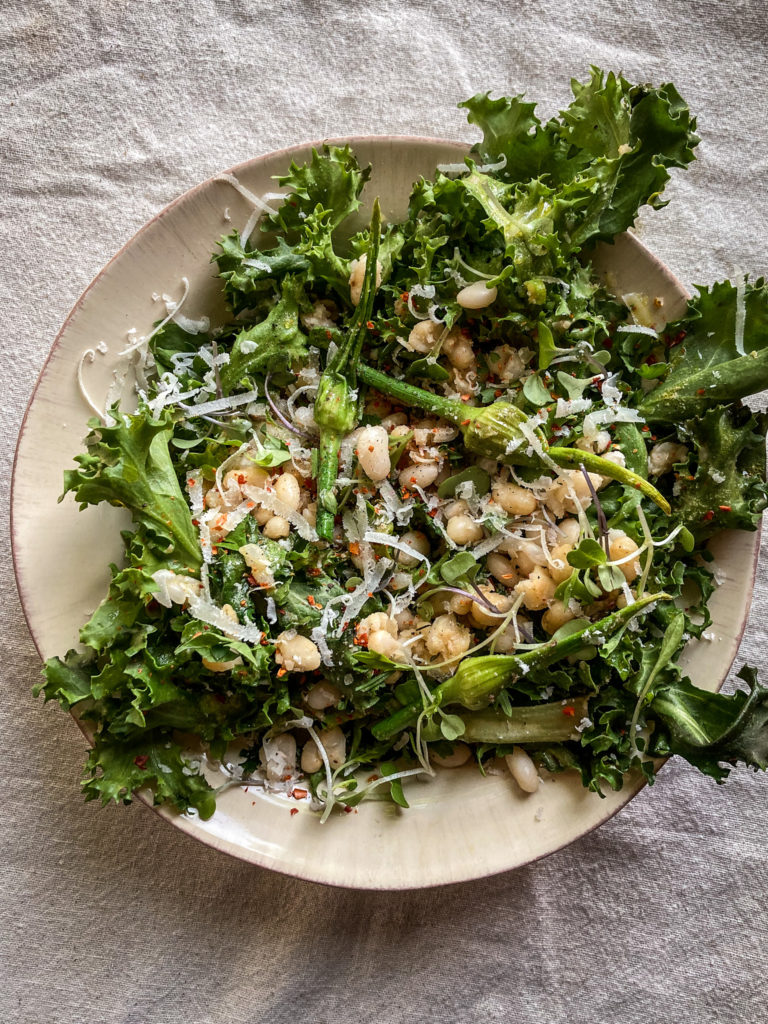
Photo by Andrea Bemis
Chicory Salad with White Beans, Anchovies & Parmesan
From Dishing Up The Dirt
This hearty salad would be a great showcase for this week’s escarole! The bitter greens play off creamy white beans and an umami anchovy, garlic, and Parmesan dressing. This recipe calls for parsley. Feel free to skip it, or sub in fresh cilantro.
.
.
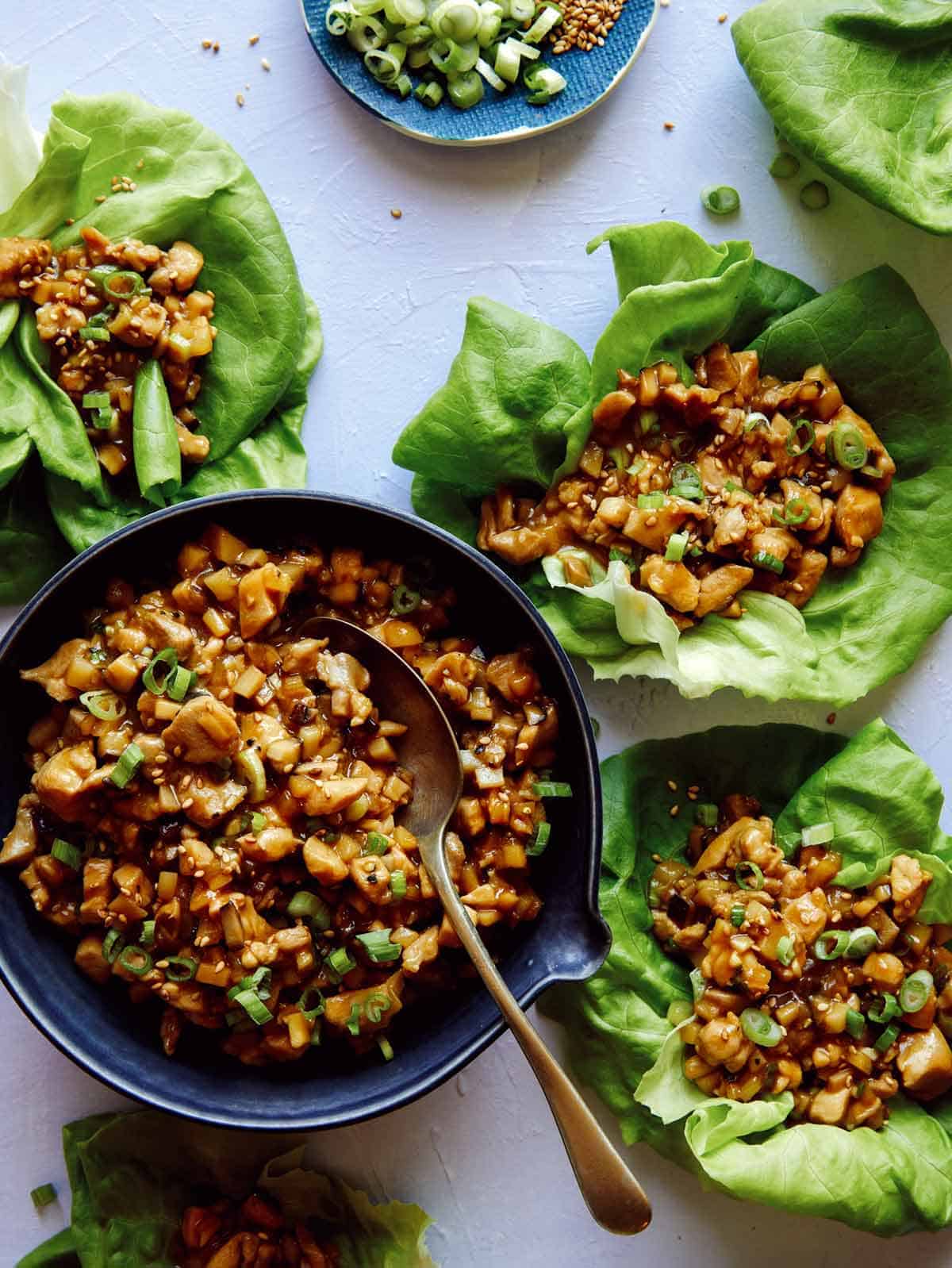
Photo by Spoon Fork Bacon
Chicken Lettuce Wraps
From Spoon Fork Bacon
These lettuce wraps would be such a fun way to use this week’s romaine! The filling is a saucy, sweet, and savory mixture of chicken thighs, shiitake mushrooms, and garlic and ginger. It also includes canned bamboo shoots and water chestnuts. If you don’t keep these ingredients on hand, feel free to skip them and add a few extra shiitakes instead.
.
.
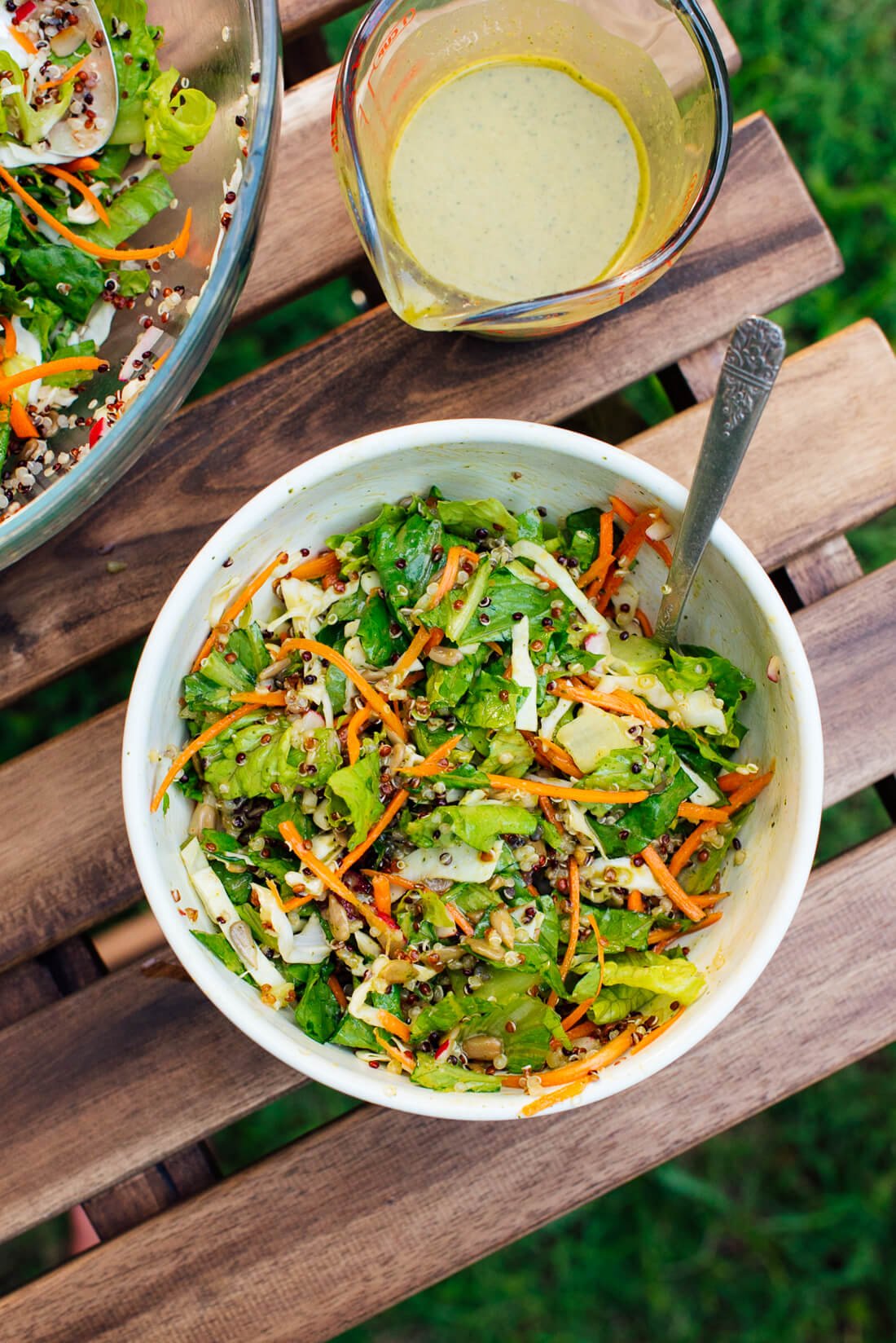
Photo by Kathryne Taylor
Mega Crunchy Romaine Salad
From Cookie + Kate
This refreshing salad would be a great summer side dish or healthy lunch! A zippy cilantro dressing coats crunchy romaine, radishes, quinoa, sunflower seeds, and chewy dried cranberries. The recipe also calls for cabbage, which you can skip, and carrots, which you can replace with extra radishes or salad turnips.
.
.
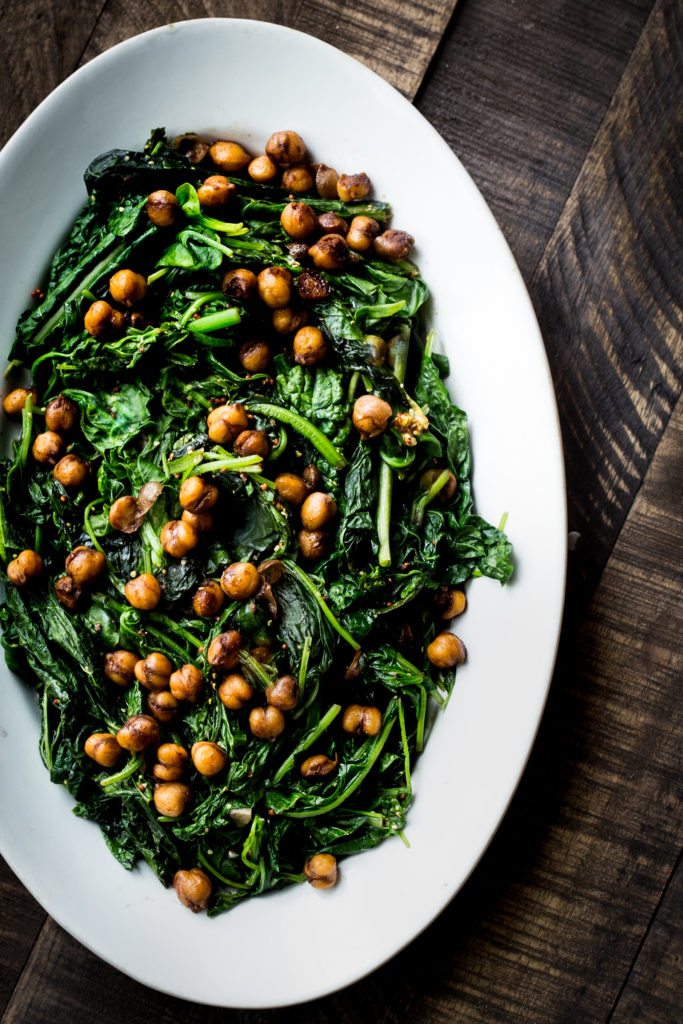
Photo by Andrea Bemis
Braised Mustard Greens with Sesame Chickpeas
From Dishing Up The Dirt
This recipe would be a simple, flavorful way to cook the komatsuna in this week’s box. The greens are braised in miso water and then tossed with nutty sesame oil, maple syrup, and tangy rice vinegar. A roasted sesame chickpea topping adds crunch.
.
.
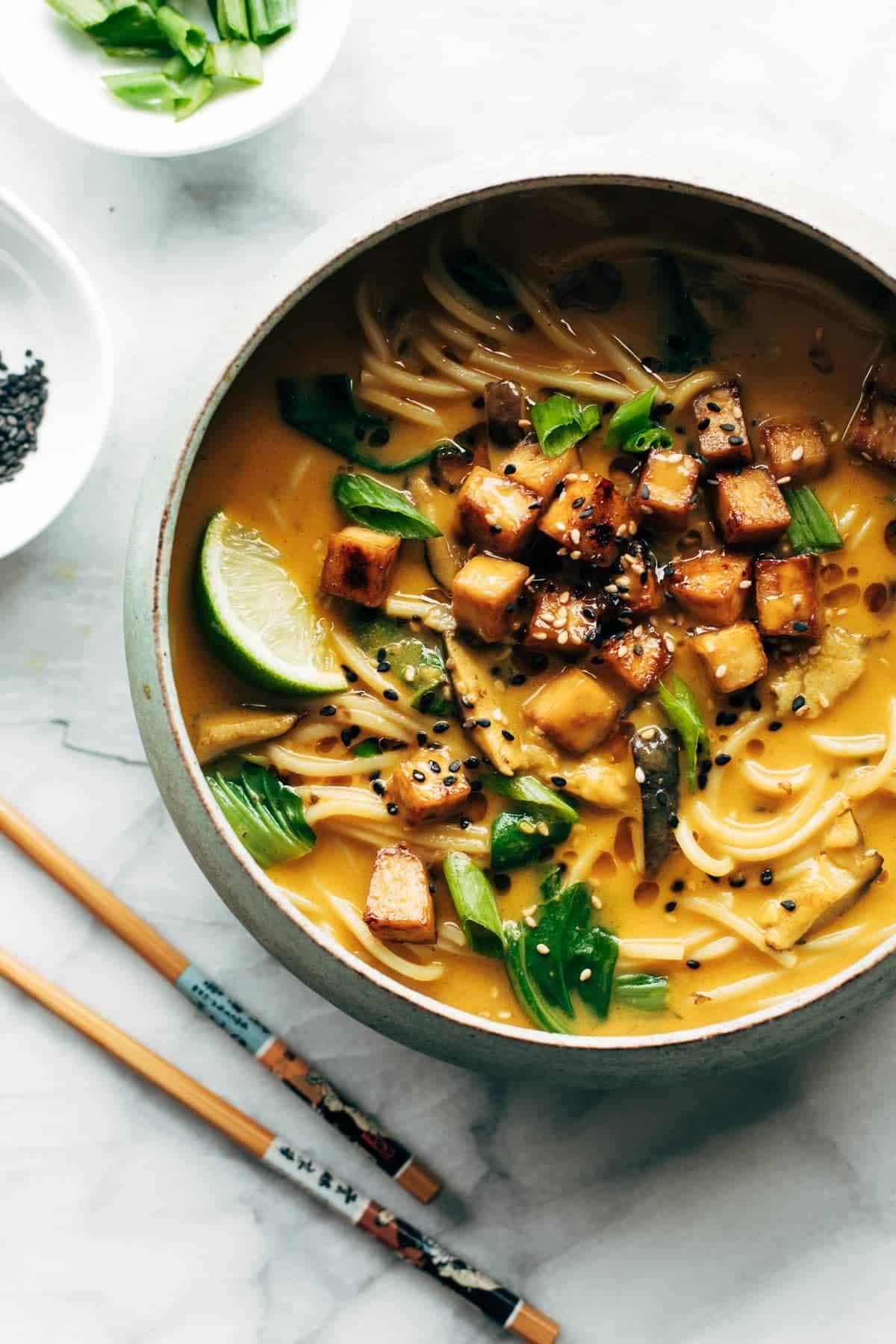
Photo by Pinch of Yum
Coconut Curry Ramen
From Pinch of Yum
Shiitake mushrooms add meaty texture and savory flavor to this rich vegetarian ramen. The recipe calls for bok choy, but a few handfuls of komatsuna would be a perfect sub.
Week #2; Forward motion
- On: June 01, 2022
 0
0
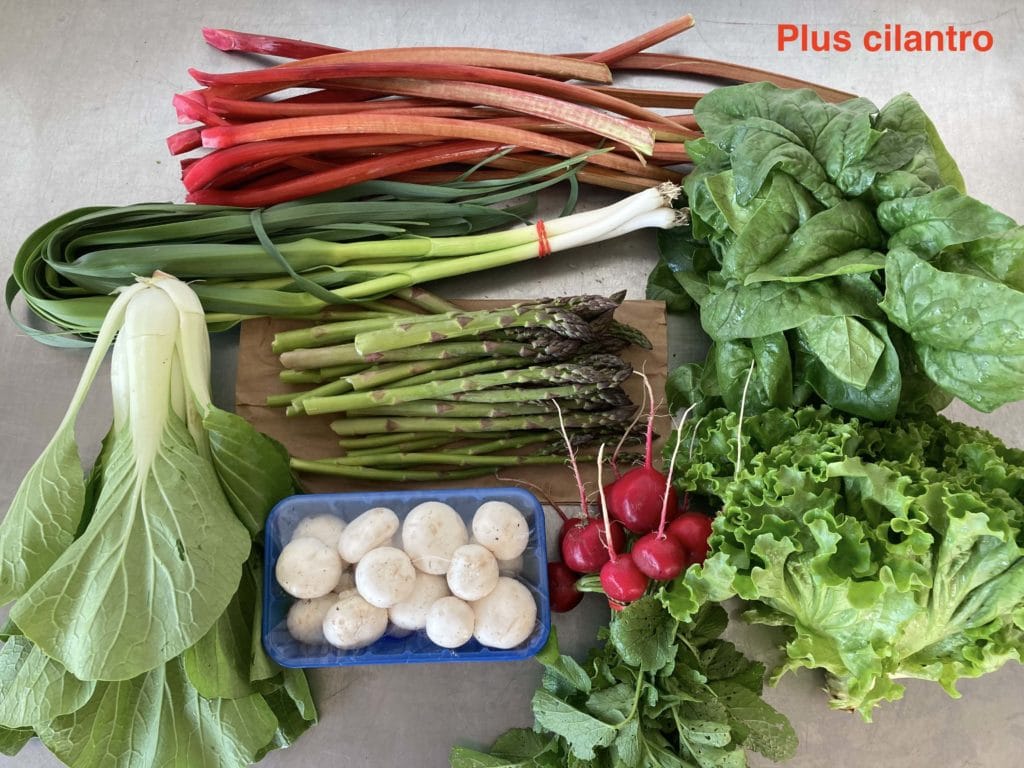
We think you will enjoy this box! Clockwise from top; rhubarb, spinach, green leaf lettuce, salad radishes, button mushrooms, and bok choy, plus asparagus and green garlic in center. The cilantro was not yet harvested so it didn’t make the photo.
Farm news
We are moving forward at a rapid pace, planting crops, training new employees, and harvesting produce for all of you. Let’s share a few images and stories from the week.
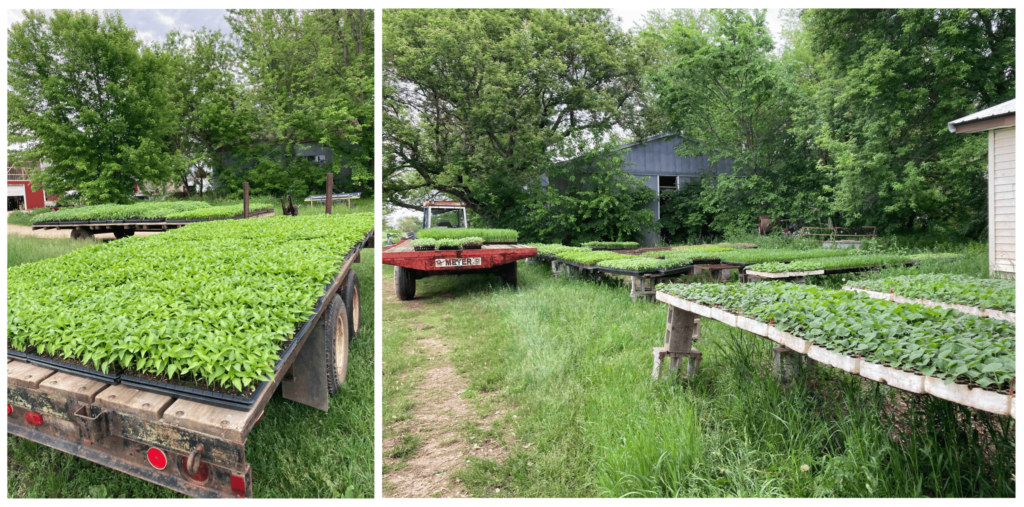
The wind was crazy this week! We lined up a large crew for Monday, expecting to spend the day transplanting the seedlings in the photos above. The wind ended that plan. We raise our seedlings in our greenhouses and move them outside to ‘harden off’ in a sheltered spot near the buildings. Wind is buffered by trees to the west and south. Exposure to sun and wind and rain helps prepare the seedlings but, early in the week, wind out in the unsheltered fields was too fierce. Even hardened seedlings are fragile and can break. So we switched gears, worked on other projects and are now ready to transplant most of the seedlings above on Thursday and Friday.

We add new employees are our work increases. Above, crew leader Maggie shows new employees Madalyn and Ella (off screen) how to harvest and bunch cilantro. The bunch size is important, to ensure we have enough crop for both this week’s and next week’s CSA deliveries. In the background Karen (10th season) gathers the harvest tools. At left, Ari (5th season of work, 19th year of residence) watches.
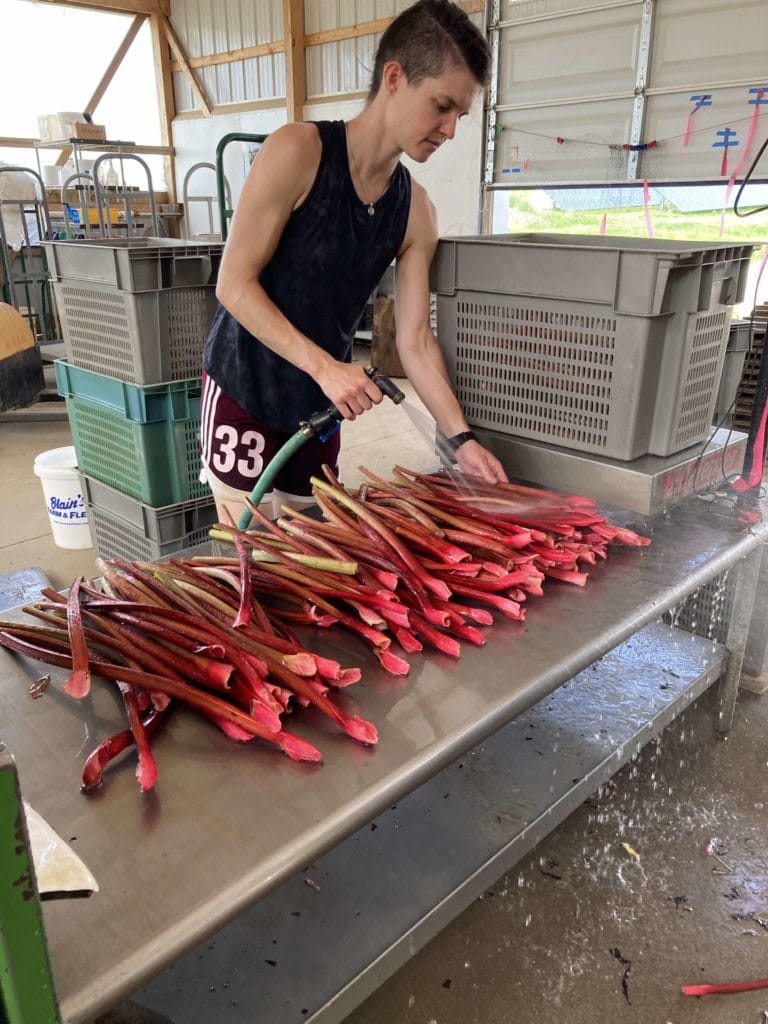
Abby washes your rhubarb.
Our rhubarb fields have recovered from last year’s devastating late May frost. Returning members, you may remember that we had almost no rhubarb for you because of that frost. The plants regrew, but needed a season’s recovery before we could harvest again. They are looking good now.
Veggie List & Veggie Notes
Week #2, June 2/3 2022
– Weekly shares
– EOW/ purple
– Sampler/ sun
Asparagus, ~1 lb
Bok choy, 1 medium
Button mushrooms, 12 oz
Cilantro, 1 bunch
Green garlic, 1 bunch
Lettuce, green leaf
Rhubarb, 1.75 lb
Salad radishes, 1 bunch
Spinach, 1 bunch
Next week’s box will probably contain spinach, lettuce, salad turnips, shiitake mushrooms, escarole, another type of spring green and more.
VEGGIE NOTES
Visit this section each week for information about each vegetable, including anything I want you to know about this week’s harvest. I list the storage and prep information once or twice, but then I stop repeating it. We encourage you to read the newsletter each week so you have this information ready when you receive a vegetable for the first time. For this week, I’ll repeat everything relevant from our 5/26/22 newsletter, to make things easy for members getting their first box this week.
Asparagus – This is my favorite spring treat! Some of the asparagus is from our farm and some is from our friends Tim and April’s Lotfotl Farm. They have a larger asparagus field than they need, so we go and pick it for them once a week.
Prep: Wash your asparagus thoroughly to remove hidden grit. Submerge in water with the tips pointing down, soak briefly, then swish vigorously and pull out of the water. The draining action helps pull the grit out of the asparagus tips. Repeat several times.
Storage: Asparagus is perishable, so eat it as soon as possible. Store in a paper towel, cloth or paper bag, then wrap loosely in a plastic bag. The paper bag protects the asparagus tips from direct contact with the plastic bag. The plastic bag keeps the asparagus from wilting.
Preparation: We snap our asparagus at harvest, rather than cutting. Therefore, there is no need to snap the stalks to remove fibrous ends. For the same reason, it is not necessary to peel the asparagus stalks. It’s OK to trim the cut end a bit.
Cooking: If your asparagus stalks vary greatly in size, you will want to cook the thicker ones longer. Put an empty steamer pot over water, and bring the water to a boil. Add the asparagus. Cover and steam over medium heat until just tender. Use two forks or a spatula to turn the asparagus during cooking, rotating the bottom spears to the top. Drain and serve. Alternatively, you can lay spears flat in the bottom of a broad pan, with ½ inch of water. Also excellent broiled or grilled. Good dressed with vinaigrette, or with lime juice, salt and pepper.
Bok choy (rosette with thick white stems and green leaves) – This Asian green is good for stir-frying or sautéing or in soup. You can think of the stems and leaves as two separate vegetables. The stems require longer cooking. The leaves will cook almost as quickly as spinach. Bok choy stores well, so feel free to pull off leaves as you need them, or use the whole head at once. Storage: Refrigerate in a plastic bag or other container.
Some heads have small flower stalks which you can eat or remove. The plants have begun flowering in response to cold – hot – cold weather this spring.
Button mushrooms – These organic mushrooms are from Hidden Valley Mushrooms from Wisconsin Dells. We bring in mushrooms from Mary and Ed every spring because they combine so perfectly with our spring vegetables, for salads, quiches, etc.
Storage: Here are Mary’s suggestions for storing the mushrooms:
– Store separate from leafy greens, which hasten mushroom aging.
– If storing for more than a few days, remove from the box and refrigerate in a paper bag with holes punched in the side. Keep dry.
– Don’t wash to clean, just wipe with a damp cloth.
Cilantro – Used in both Mexican and some Asian cuisines. Good to season stir-fries, salad dressing, salsa, etc.
Storage: Cover and refrigerate.
Green garlic (looks like scallions, tastes like garlic) – Last fall, we planted garlic cloves that grew into the stalks we harvested this week. If left to grow until mid-summer, the slim white bulb on this week’s garlic will divide and form the usual cluster of cloves in a garlic bulb.
Preparation: Green garlic is more pungent than scallions, so slice thinly and use sparingly when raw. It mellows when cooked. Chop and add to any cooked dish that would benefit from garlic. Use the white bulbs and pale green stems. Avoid the dark green stems and leaves, as these are fibrous.
Lettuce – See the “How to wash greens efficiently and to maximize storage life” section in our 5/26/22 newsletter. That approved to wash and spin dry your greens will be useful all season. Storage: Refrigerate in a bag or other container.
Rhubarb – Storage: Refrigerate in a plastic bag. FYI, 1.75 lb of rhubarb yields 5 – 5.5 cups when chopped.
Stewed rhubarb: This is the simplest way to prepare rhubarb. Chop rhubarb into one inch chunks. Stir over medium heat with a small amount of water in the bottom of the pan. The rhubarb will release moisture as it cooks. Stew until it softens and falls apart. Sweeten to taste with honey or sugar. Eat warm on its own, over vanilla ice cream, on pancakes, etc.
Preserve: Rhubarb is so easy to freeze. Wash, chop and pop it in a freezer bag. That’s it; no need for blanching. When baking muffins or cakes, add the frozen rhubarb directly to the batter.
Salad radishes – These are so good right now; tender, crisp and not too spicy. They are great in salads or thinly sliced on sandwiches. A few years ago, I was served open-faced radish and butter sandwiches on toast and was impressed with how tasty they were. Use good quality butter.
Storage: Cover and refrigerate.
Spinach – This batch is tender and excellent for salads or cooking. See the “How to wash greens efficiently and to maximize storage life” section in our 5/26/22 newsletter.
RECIPES by DEB

Turmeric-Black Pepper Chicken With Asparagus
This dish is based on a recipe from the New York Times, that suggests subbing in any quick cooking vegetable for the asparagus, such as the bok choy or spinach in this week’s box, and serving it with rice or noodles, or in lettuce cups. You could also sub tofu or shrimp for the chicken.
Serves: 4
Prep time: 15 minutes
Cook time: 10 minutes, not counting time for rice or noodles
3 tablespoons honey
1.4 cup water
3/4 teaspoon ground black pepper, plus more to taste
1 1/2 teaspoons kosher salt, divided, plus additional to taste
2 tablespoons all-purpose flour
1 1/2 teaspoons ground turmeric
1 pound boneless, skinless chicken thighs or breasts, cut into bite size pieces
1 tablespoon coconut or canola oil
3/4 asparagus, trimmed and sliced on an angle into about 1-inch lengths, leaving the tips a bit longer
1 teaspoon unseasoned rice vinegar or soy sauce
Optional – 1 lime, cut into wedges for serving
- Stir together the water, honey, pepper, and a 1/2 teaspoon salt in a small bowl or spouted measuring cup, and set the honey mixture aside.
- Combine the flour, turmeric, and 1 teaspoon salt in a shallow bowl of plate. Add the chicken pieces and toss until coated.
- Heat the olive oil in large skillet over medium heat. Add the spinach and a pinch of salt and cook, tossing, until just wilted, 1 to 2 minutes.
- Heat the oil in a 10-inch or larger nonstick skillet over medium-high heat. Add the chicken and cook until the turmeric is fragrant and the chicken is golden brown on both sides, 2 to 3 minutes per side. Add the asparagus, stir to combine, and cook until crisp-tender, 1 to 2 minutes.
- Add the honey mixture and cook, stirring, until the chicken is cooked through and the sauce has thickened, 2 to 3 minutes.
- Remove from heat and stir in the vinegar or soy sauce. Season to taste with additional salt and pepper to taste, and serve over rice or noodles with lime wedges if you like.
.
.
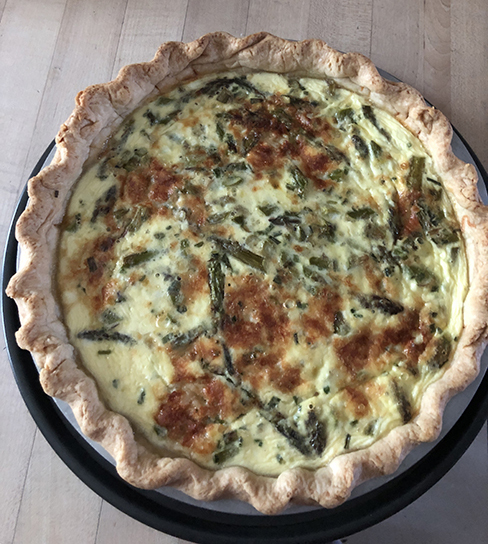
Master recipe for vegetable quiche
Use this recipe to turn any number of vegetables from this week’s box – like mushrooms, asparagus, spinach, or a combination! – into quiche. See process pictures here.
Serves: 6-8
Prep time: 30 minutes, plus an hour or overnight to chill the crust
Cook time: 40-45 minutes
Crust:
1 1/2 cups flour (unbleached white or whole wheat)
good pinch salt, less if you’re using salted butter
2 teaspoons sugar
1/2 cup butter, either salted or un- (1 stick, 8 tablespoons)
1 tablespoon vegetable shortening or lard
1 tablespoon sugar
2-4 tablespoons cold water
Filling:
1-2 tablespoons butter or olive oil
1/2 to 1 cup chopped onion, or other onion-like vegetable – green garlic, shallots, scallions, leeks, etc.
Two generous cups vegetables, cleaned and sliced, e.g. asparagus, broccoli, mushrooms, kale or other sturdy greens, etc. The exception is spinach – since it will wilt down a lot, you’ll need to start with at least half a pound and up to one pound of spinach.
salt and freshly ground pepper, maybe a grate or two of fresh nutmeg
1 1/2 cups grated cheese, 3-4 ounces, or similar volume crumbled goat cheese or feta
2-4 eggs
1 1/2 to 1 2/3 cups half & half, buttermilk, heavy cream, or a mixture
- Make the crust: measure the flour, salt and sugar into the bowl of your stand mixer (my favorite method), your food processor, or a mixing bowl. Slice the butter and shortening over the top and combine with the flour mixture, using the paddle attachment of the mixer, by pulsing the processor, or using a pastry blender, 2 knives, or your fingers, until you have a crumbly mixture with no butter lumps bigger than currants. With the mixer or processor running, or while stirring with fork, drizzle in the water by tablespoons, until the mixture just starts to come together in clumps. Stop before you have one big ball. Turn the crust out onto a floured surface and knead lightly to bring it together. Gather it into a ball, flatten into a disk, wrap (in plastic, wax paper, one of your reusable snack/sandwich bags), and chill for about an hour, and up to 2 days.
- Roll out the crust: If the dough has been chilling, get it out of the fridge about 15 minutes before you want to roll it out, to soften just a bit. Roll out the crust and fit it into a shallow 9-inch pie plate, metal preferred. The crust browns better in metal then glass, and tends to slip down the sides less. Set the crust in the fridge or freezer while you prepare the filling.
- Make the filling: melt the butter or pour the olive oil in a 10-12 inch skillet with a lid. Add the onions and sauté over medium heat until softened but not browned, 5-10 minutes. If you are using a vegetable with harder parts, such as asparagus stalks or broccoli or chard stems, add them now. Season with salt and pepper and continue to cook until starting to soften, another 5 minutes or so. Add the rest of the vegetable, e.g. asparagus tips or broccoli florets. Cover the pan the let everything steam until the vegetables are done to your liking – they should be a little underdone than for regular eating, since they will cook again in the quiche. If you are using greens add them to the onion mixture, and cover right away to wilt. Remove the lid and cook for a few more minutes to boil off any excess liquid. Remove from the heat and let cool.
- Heat the oven to 375° Get the quiche crust out of the fridge or freezer, and place it on a cookie sheet or pizza pan, dark colored (better for browning) if you have one.
- Assemble the quiche: Sprinkle a layer of cheese into the bottom of the crust, reserving about 1/3 cup for topping. Beat the eggs in a spouted measuring cup that’s at least 2 cups (one pint) or larger if you have one. Add enough of whatever dairy product you are using to come to 2 1/4 cups. Add the vegetable filling on top of the cheese, and then pour in the egg mixture. Some people like to put the vegetable & cheese filled quiche onto the oven rack, and then add the egg to avoid having to walk across the kitchen with a liquid-filled quiche. If your oven racks don’t slide in smoothly you might spill the quiche at that point, however.
- Bake for about 25 minutes on an upper rack then move to a lower rack and bake another 20 minutes or so until puffed and golden. Allow to rest for a few minutes before cutting and serving. Enjoy hot or room temperature.
Baby Bok Choy with Oyster Sauce
From Food Network
This recipe calls for about 1 1/2 pounds of bok choy; we’re getting a bit less than that in the box – but it’s a light amount of sauce so will not overpower the smaller amount of vegetables!
.
.
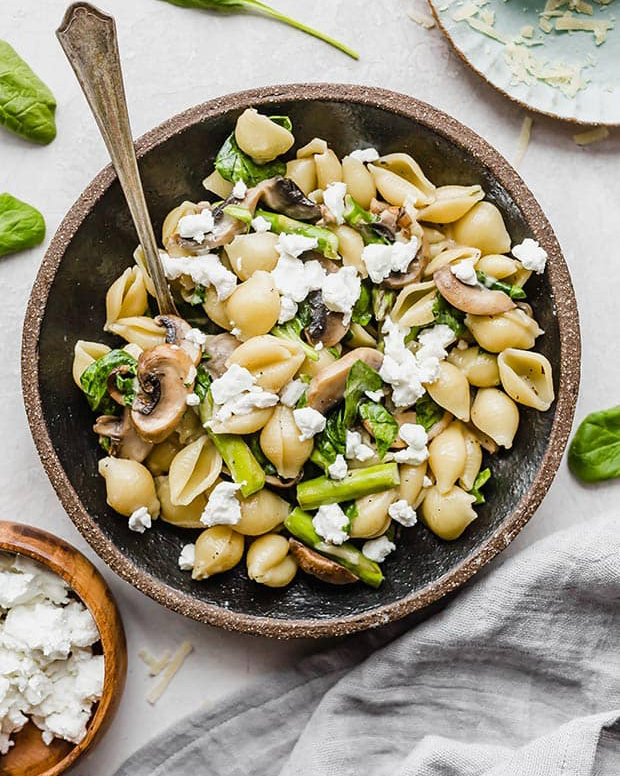
Photo by Whitney of Salt & Baker
Creamy Goat Cheese and Asparagus Spinach Pasta
From Salt & Baker
This light pasta dish can be prepared in 30 minutes or less, and seems designed for the produce in this week’s box, mushrooms, asparagus, and spinach. Sub in the white parts of one stalk of green garlic, minced, for the garlic clove called for.
.
.
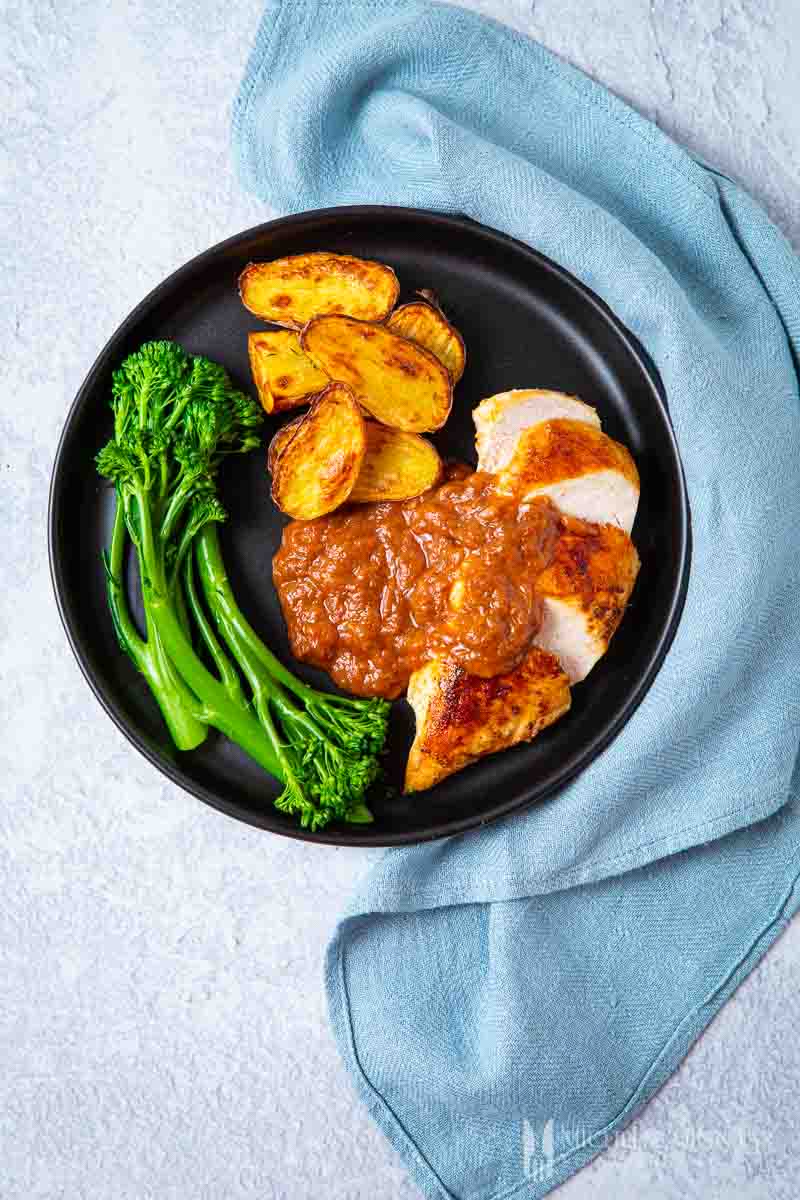
Photo by Michelle Minnaar
Chicken with Rhubarb
From the Greedy Gourmet
This quick dinner shows off the savory side of rhubarb. Serve with sauteed spinach and cilantro rice (stir about 1/4 cup chopped cilantro into 2 cups of cooked rice) for a complete meal.
.
.
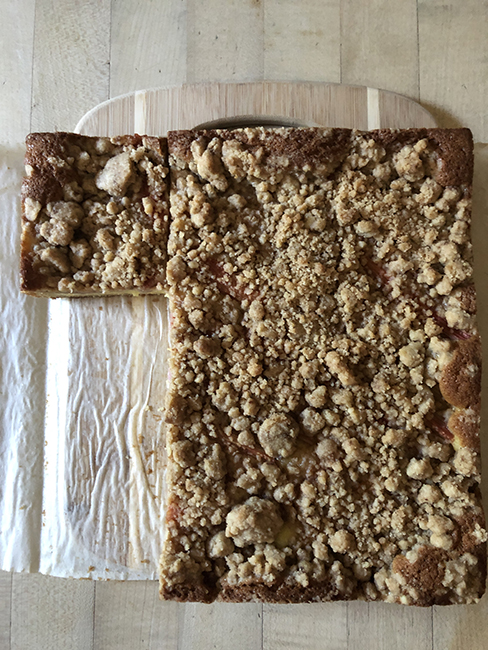
Photo by DebsLunch
Rhubarb Custard Crumb Cake
From DebsLunch, based on Nicola Lamb
How many recipes for rhubarb cake can anyone possibly need? This crumble-topped, custard-filled version is a welcome addition to your recipe files!
.
.
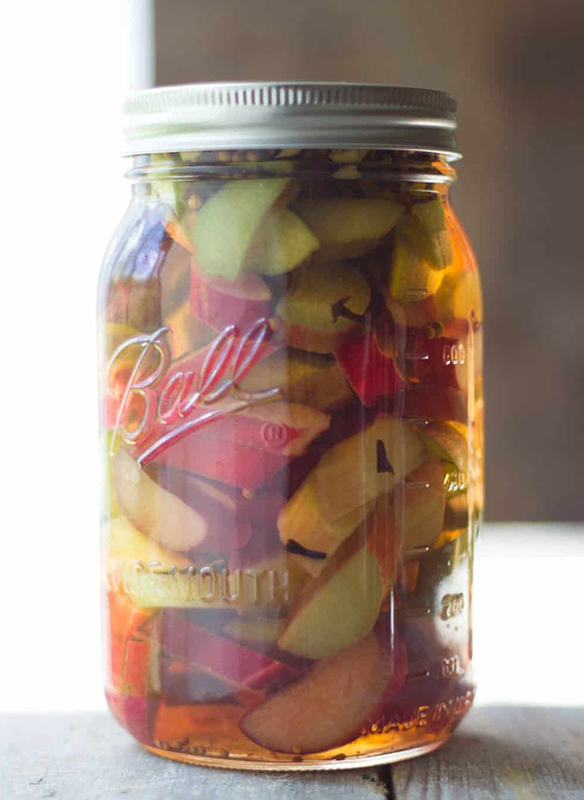
Photo by Julie of the Healthy Epicurean
Sweet Pickled Rhubarb
From The Healthy Epicurean
Another savory rhubarb recipe, and there are any number of ways to use this pickled rhubarb from the Healthy Epicurean; serve it with roasted chicken or other meats, top a bagel with cream cheese, or add it to a salad – see suggestions following. This recipe provides instructions for canning the pickled rhubarb to make it shelf-stable, but it will work as a refrigerator pickle and should keep in the fridge for several months.
.
.
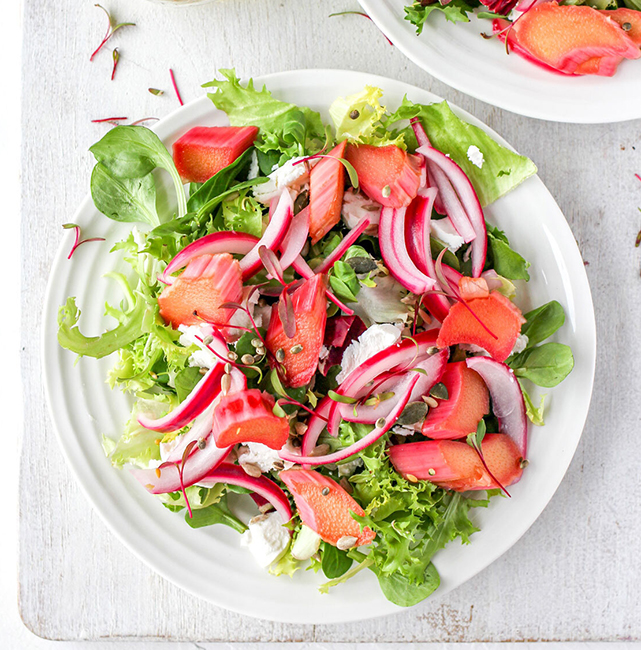
Photo by The Mother Cooker
Quick Pickled Rhubarb Salad with Goats Cheese
From The Mother Cooker
This recipe from a UK blog, where they have rhubarb much earlier in the year then we do, can be used with the sweet pickled rhubarb, and also provides another formula for pickling your rhubarb, and suggestions for combining it in a salad with lettuce from this week’s box, goat cheese, onion pickled along with the rhubarb, and a dressing made from olive oil and pickling brine. A few sliced mushrooms or spinach leaves or salad radishes would also be tasty in this salad.

